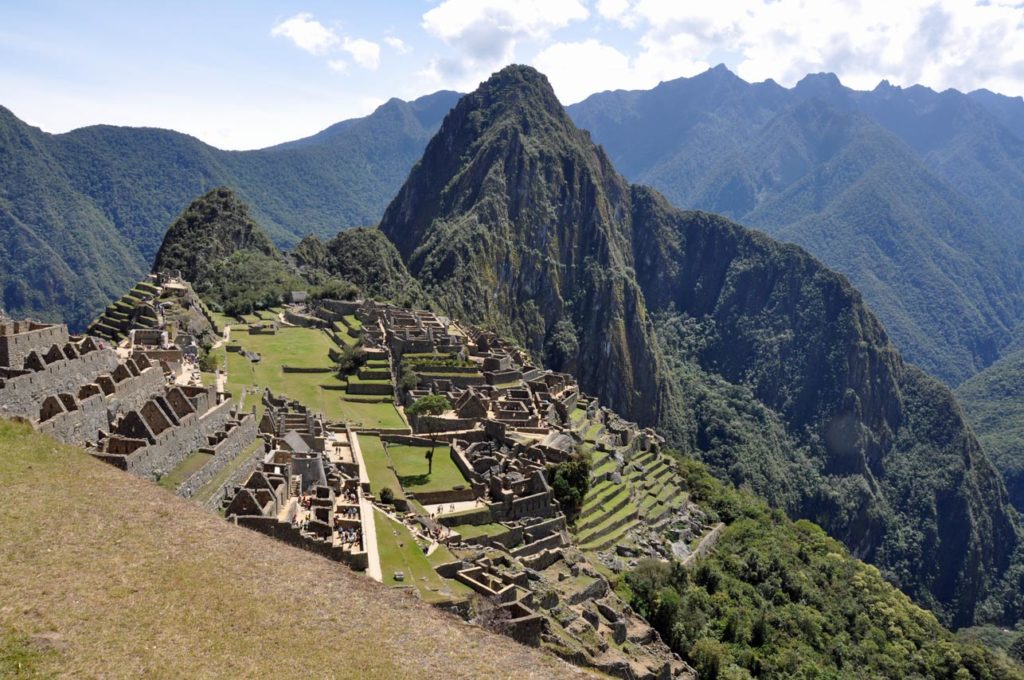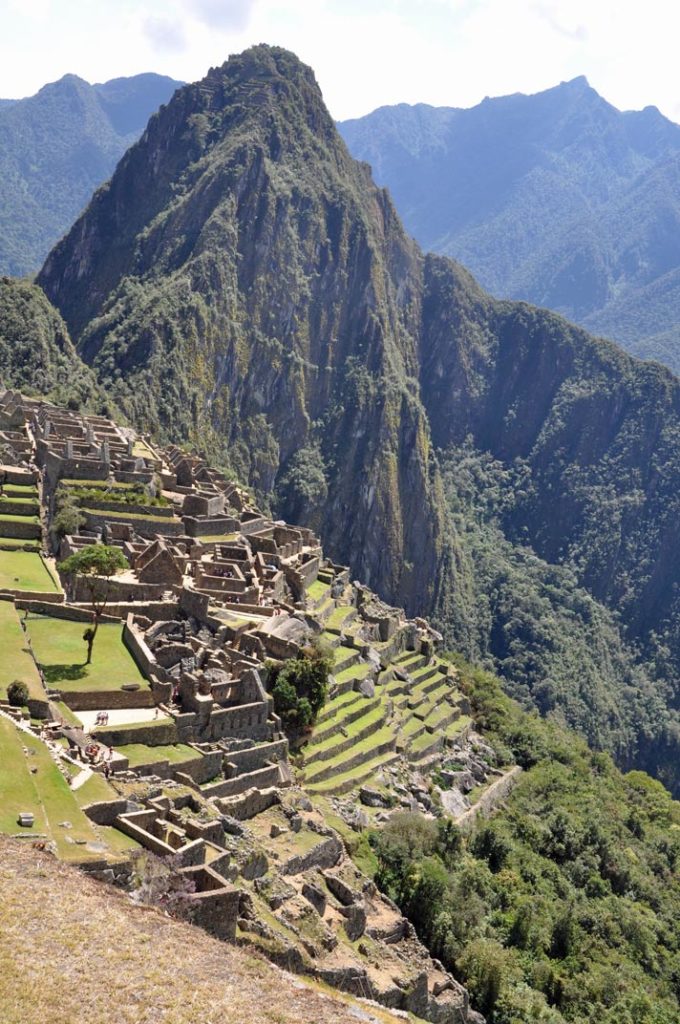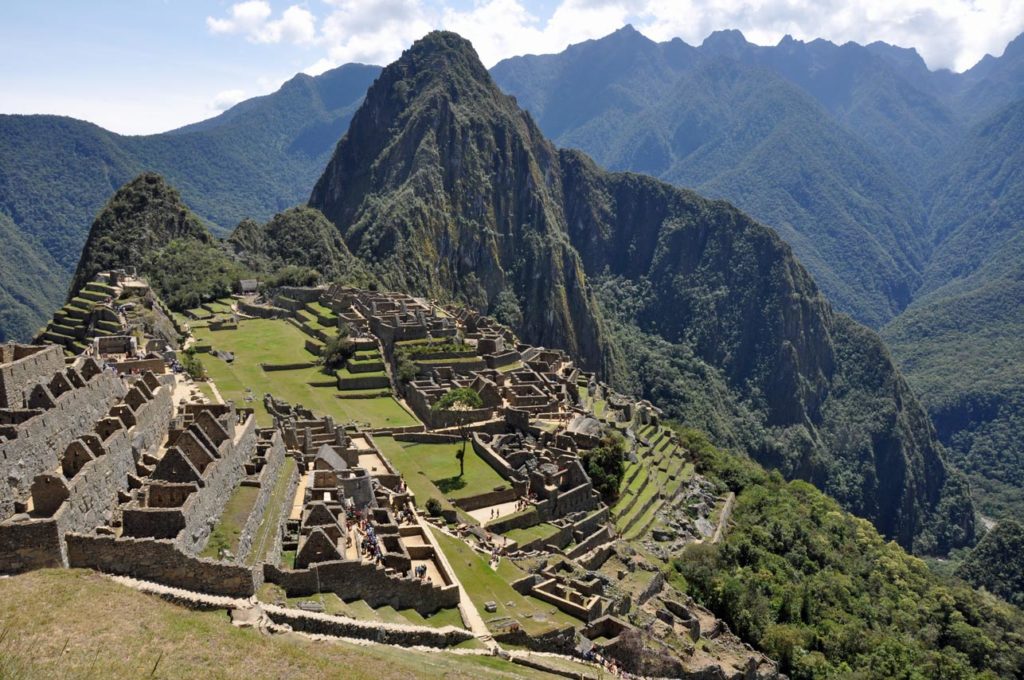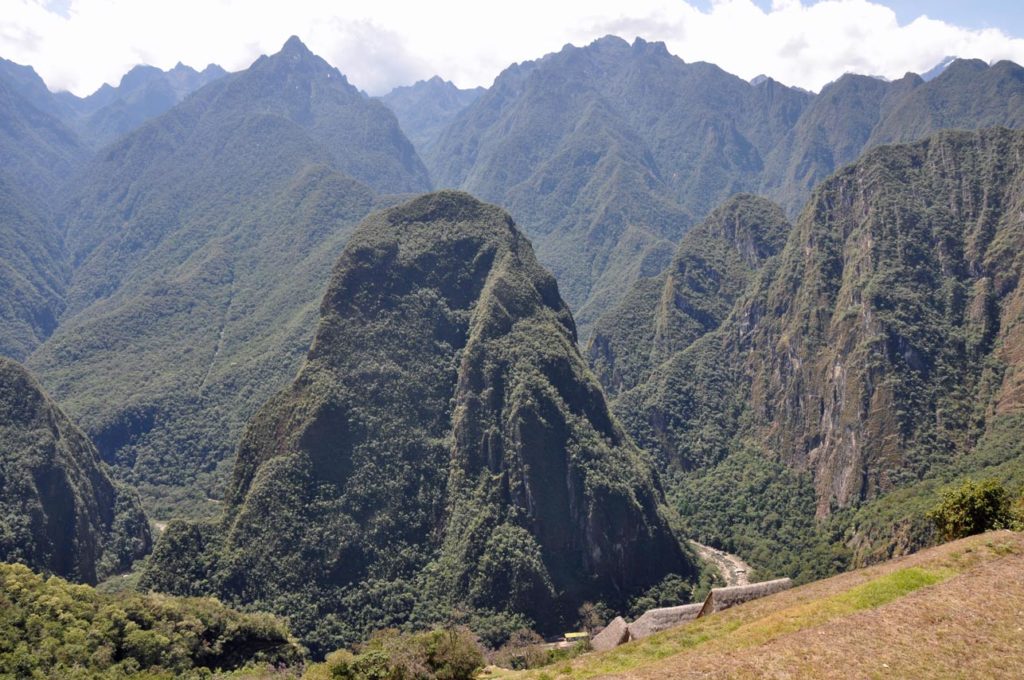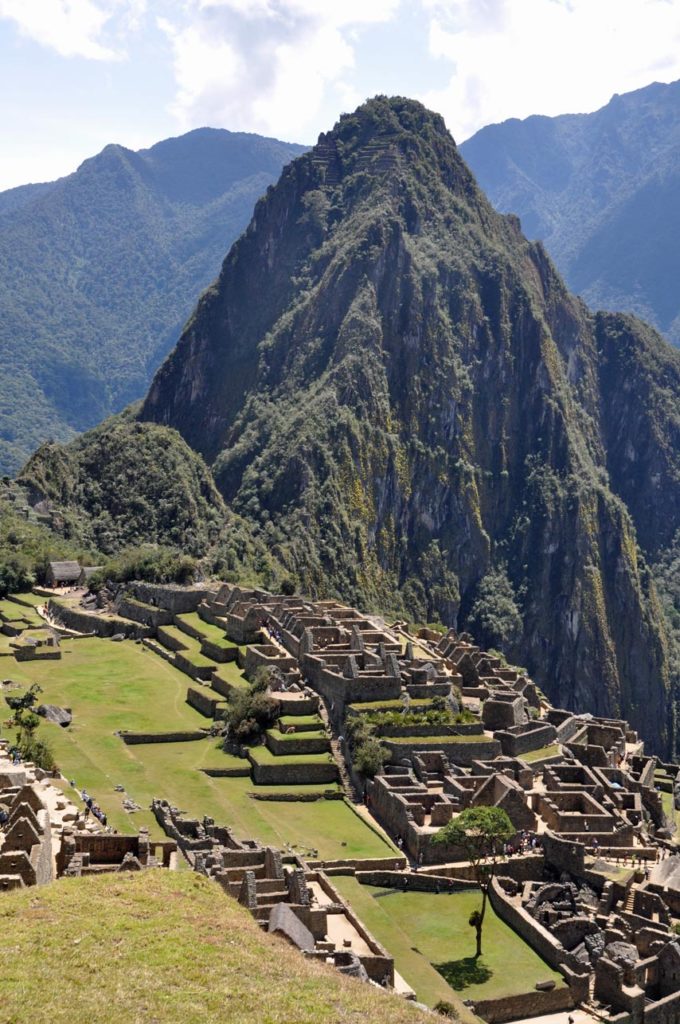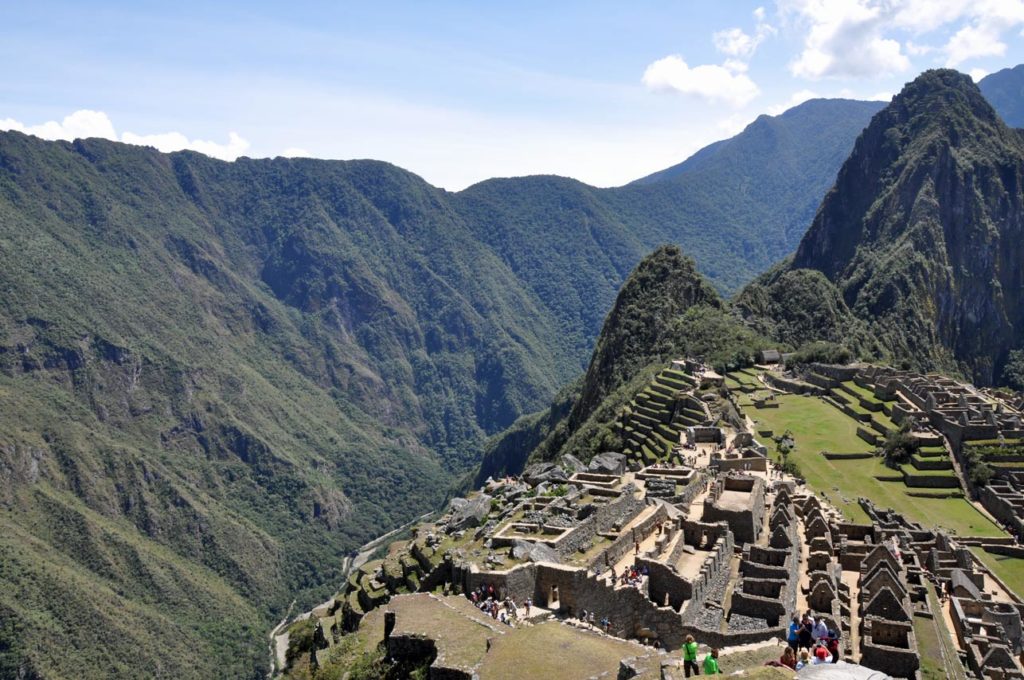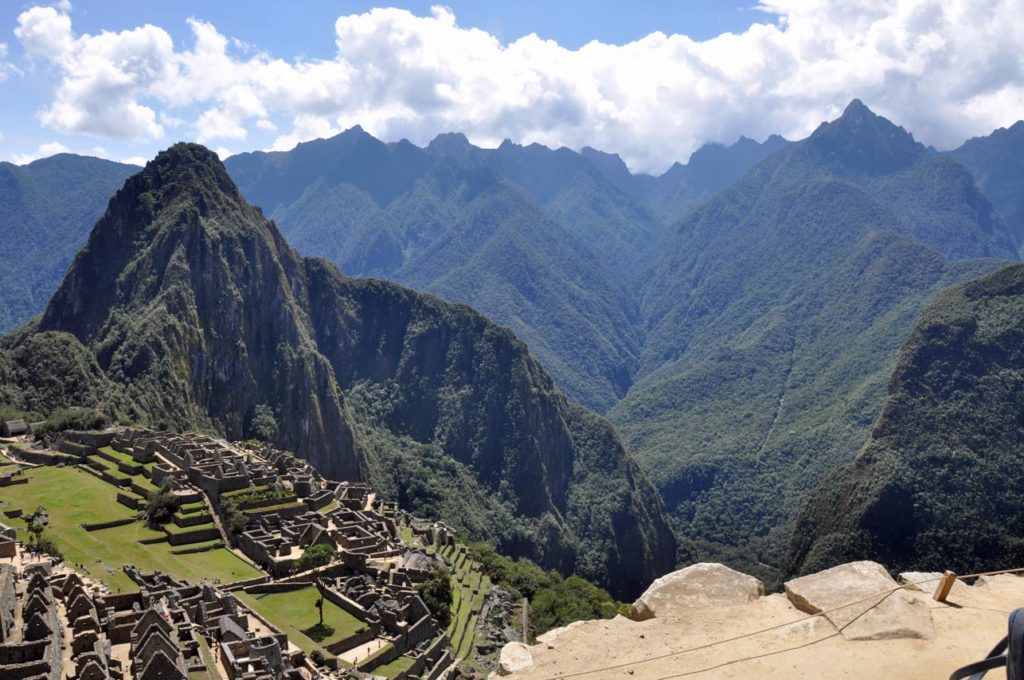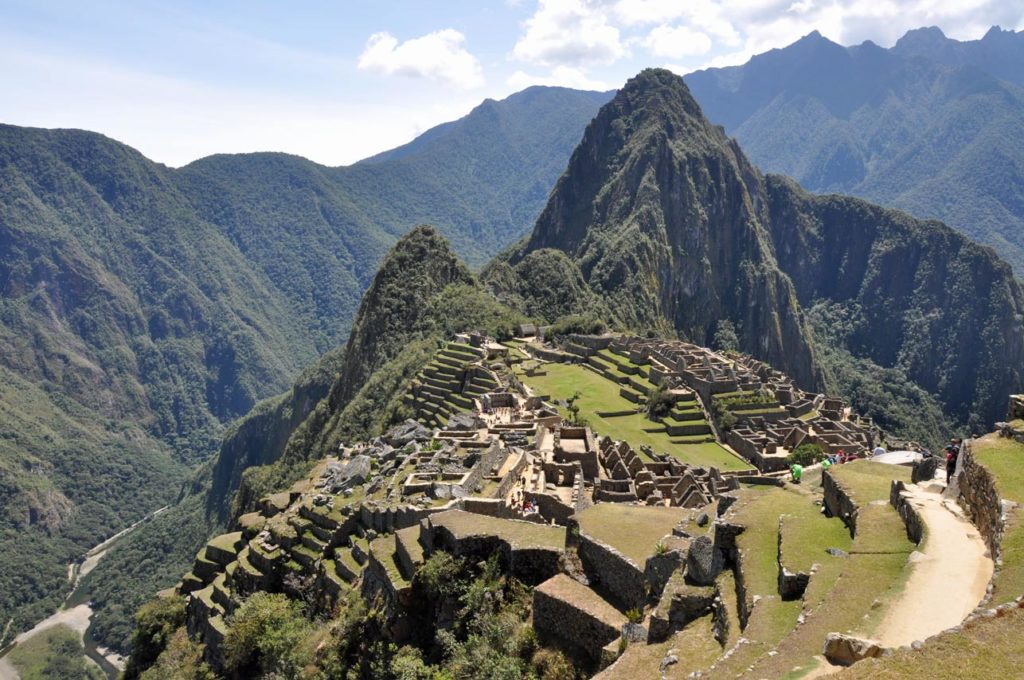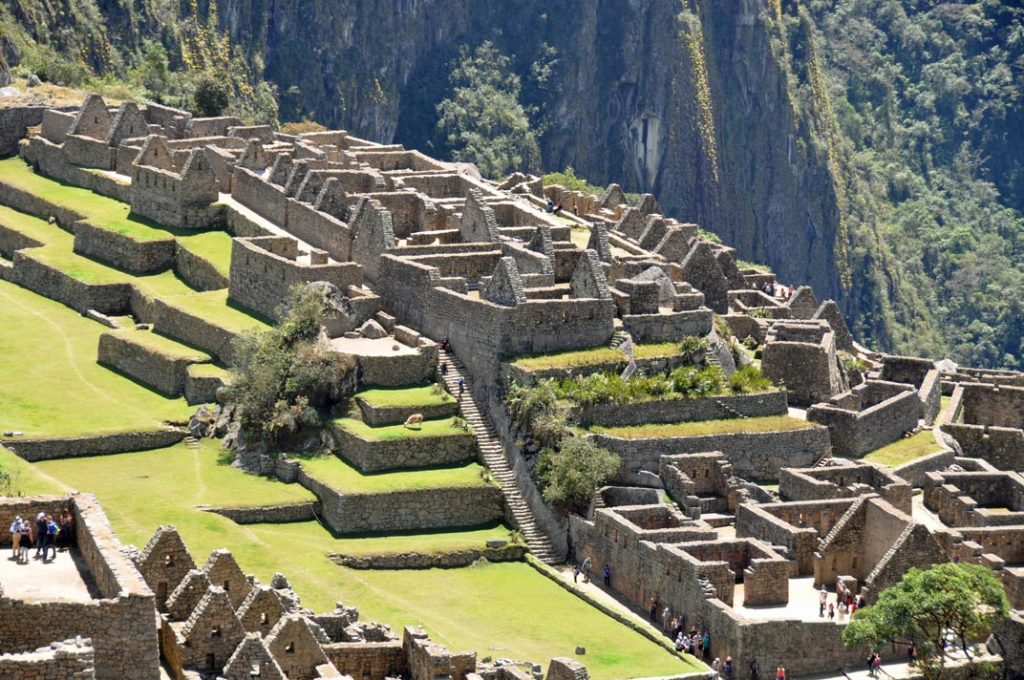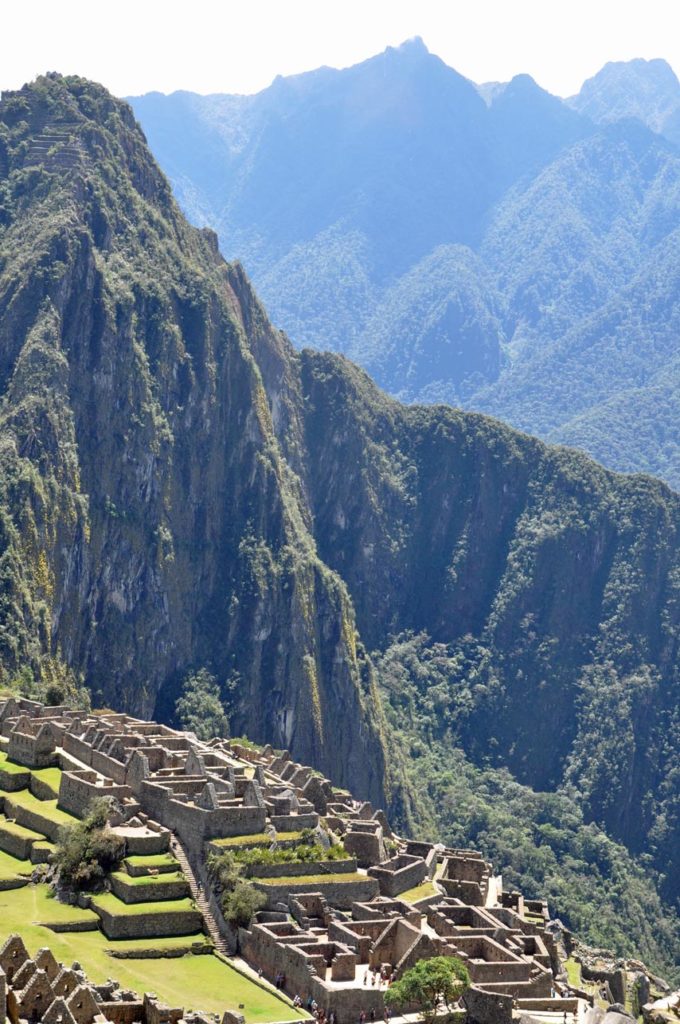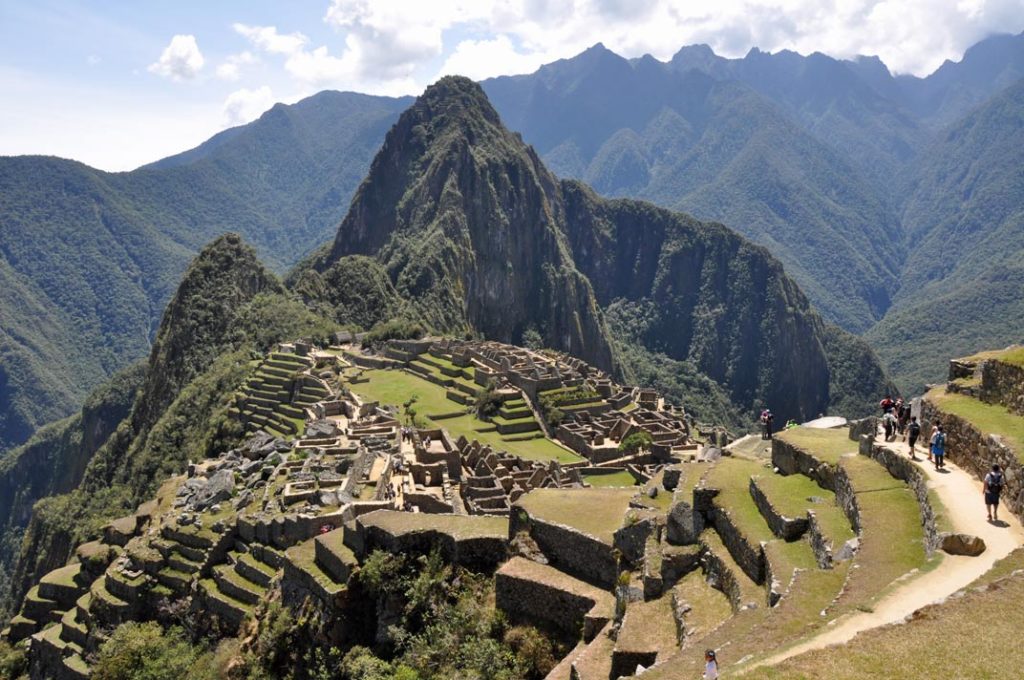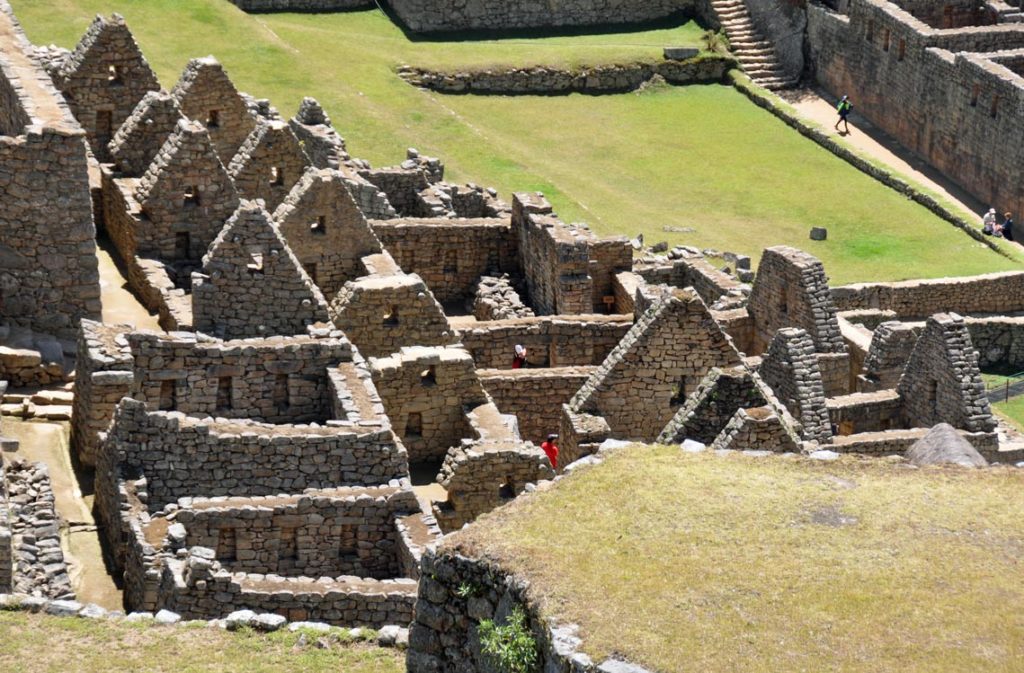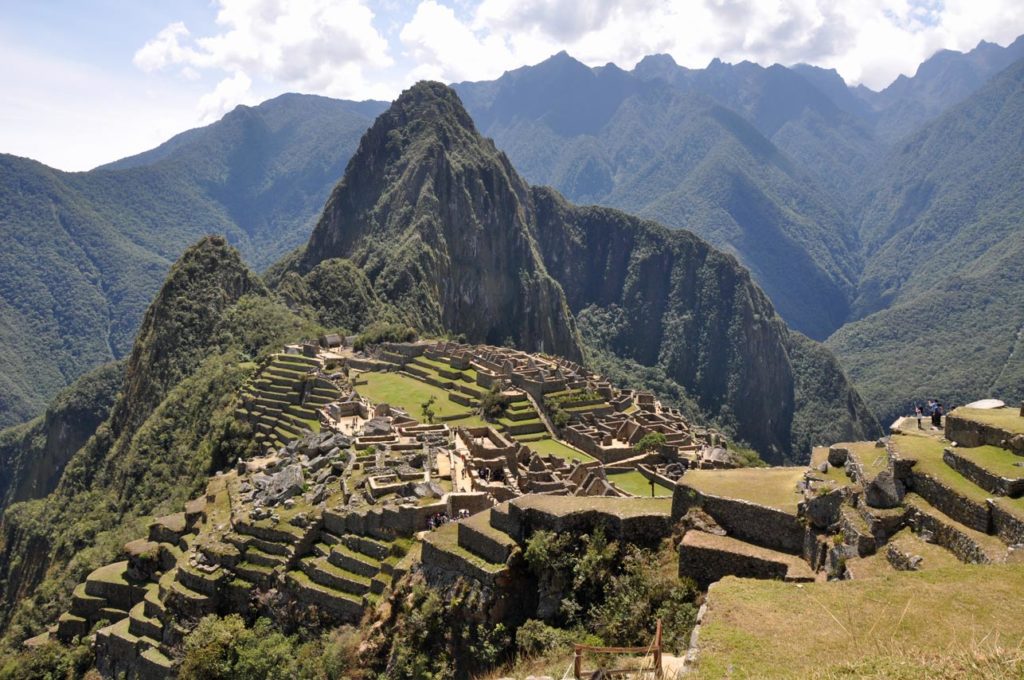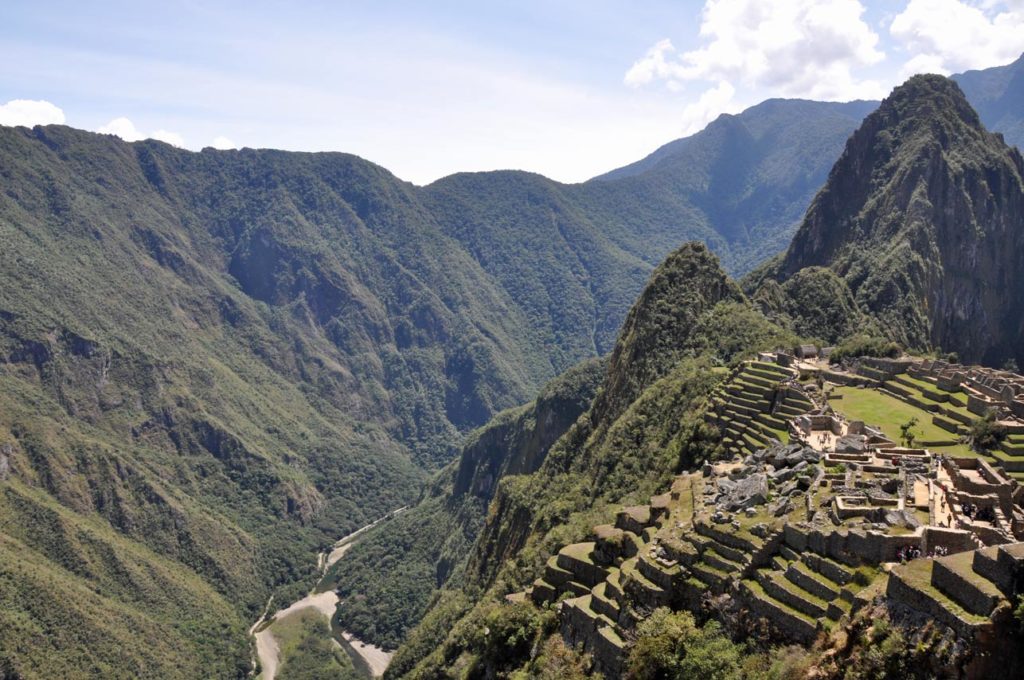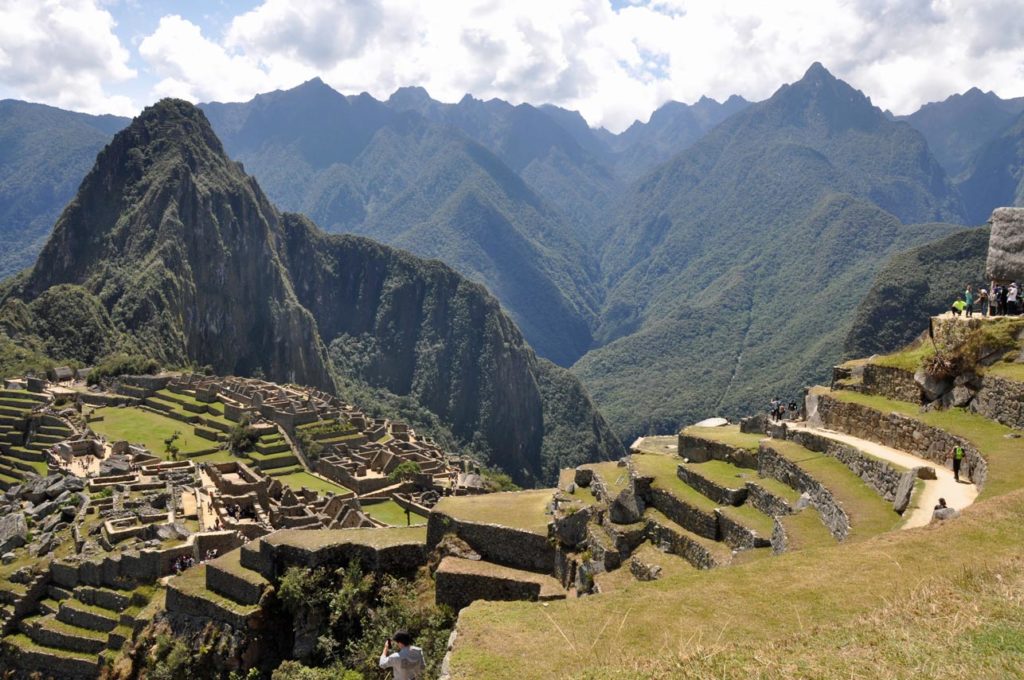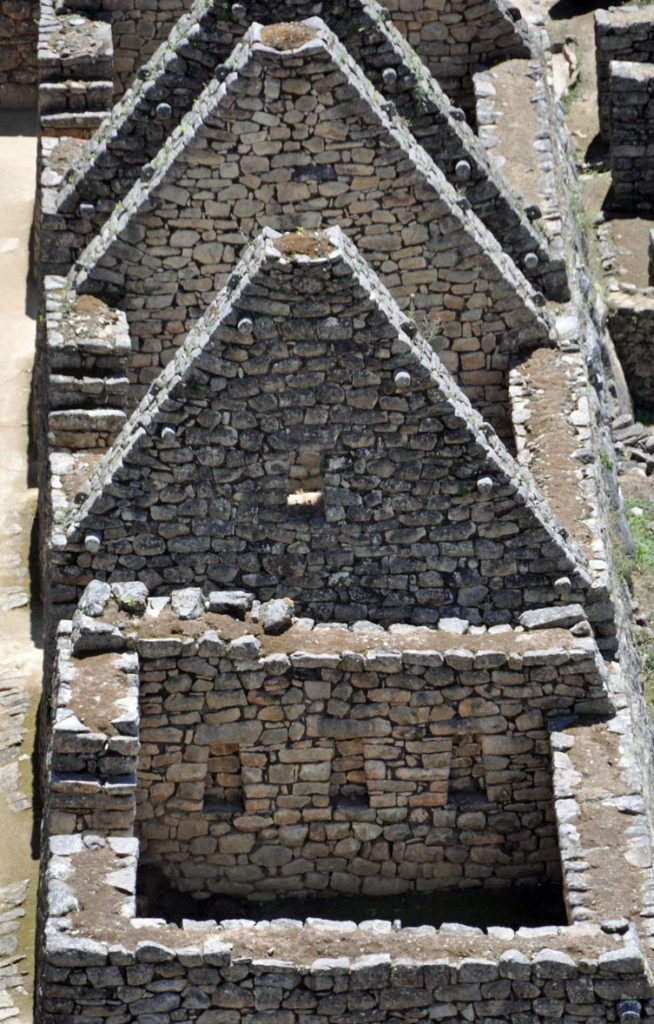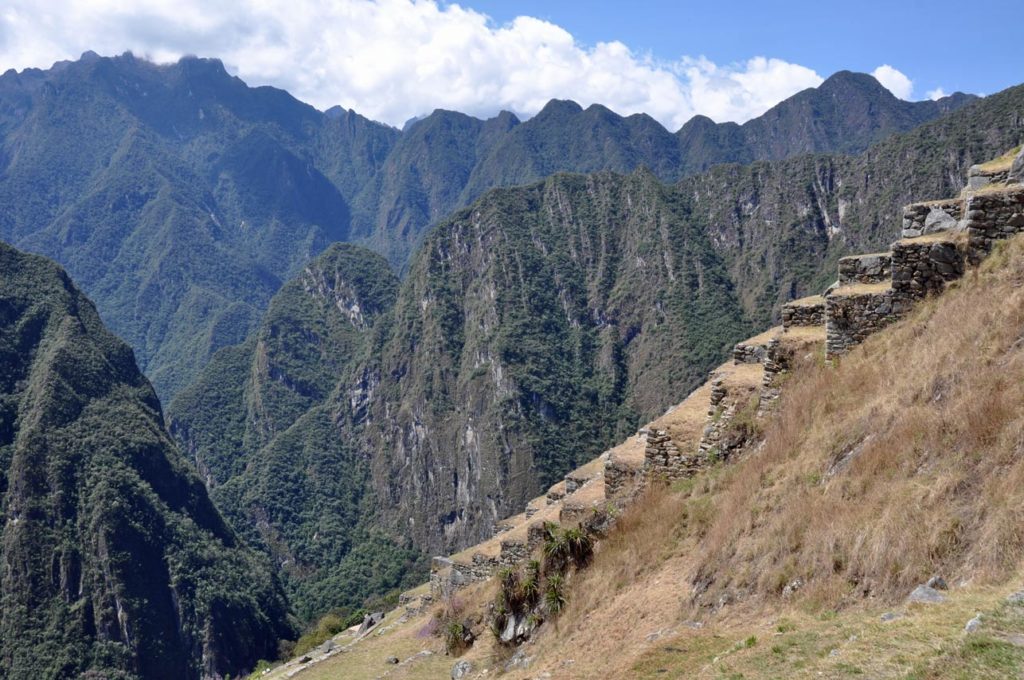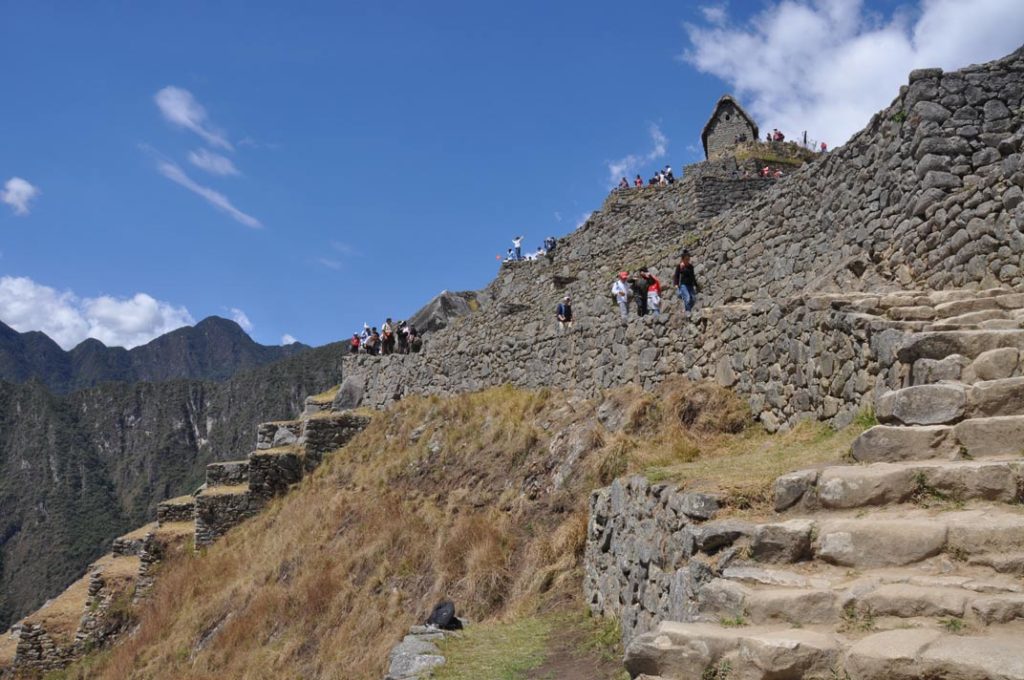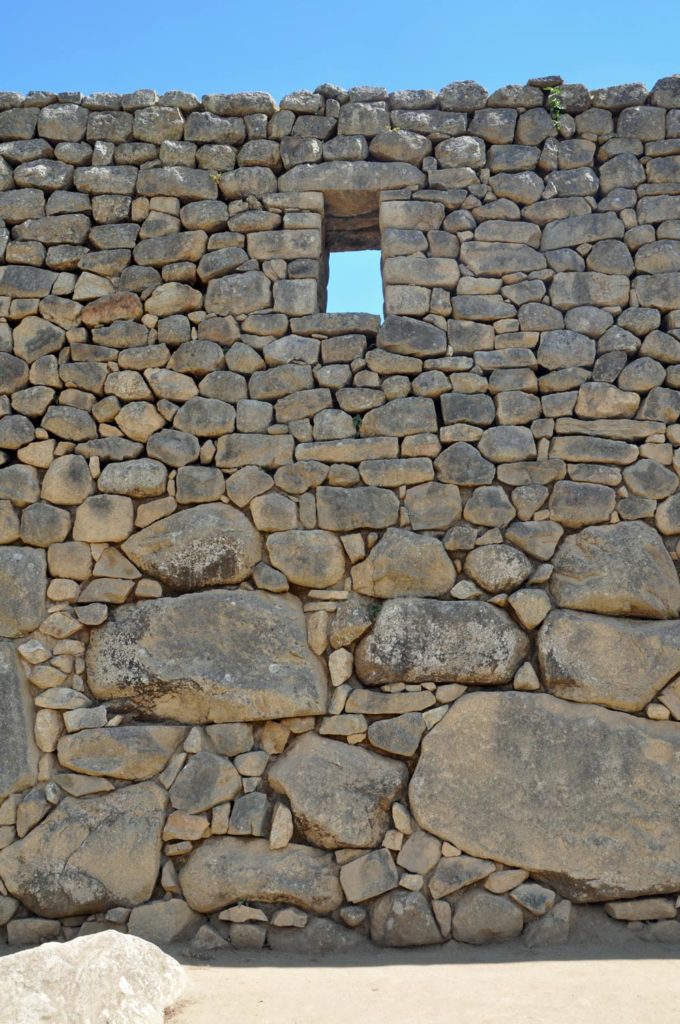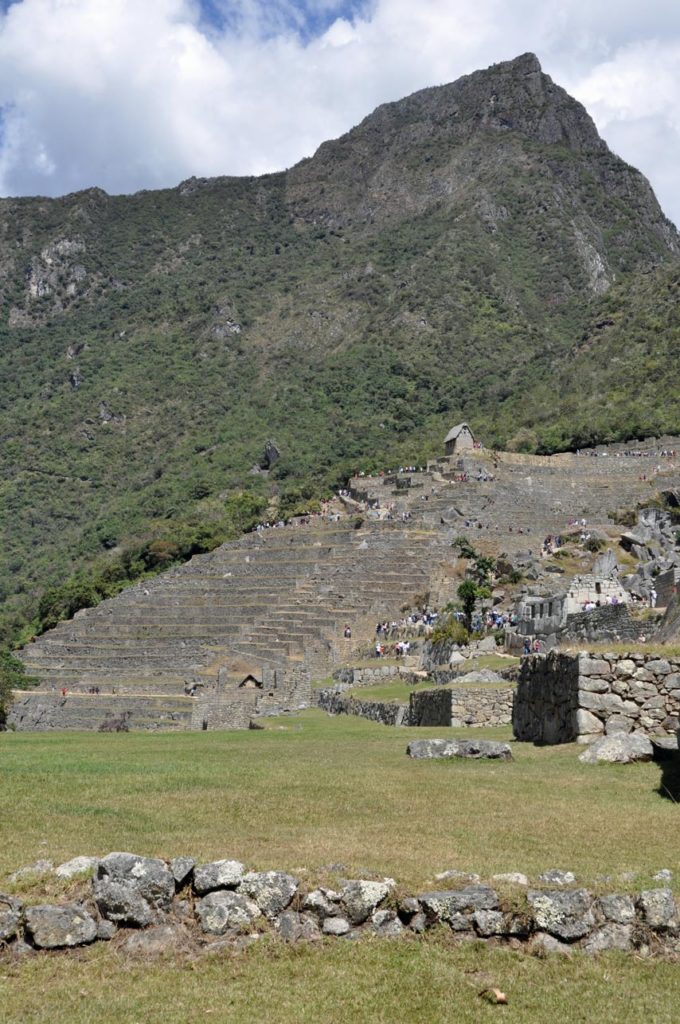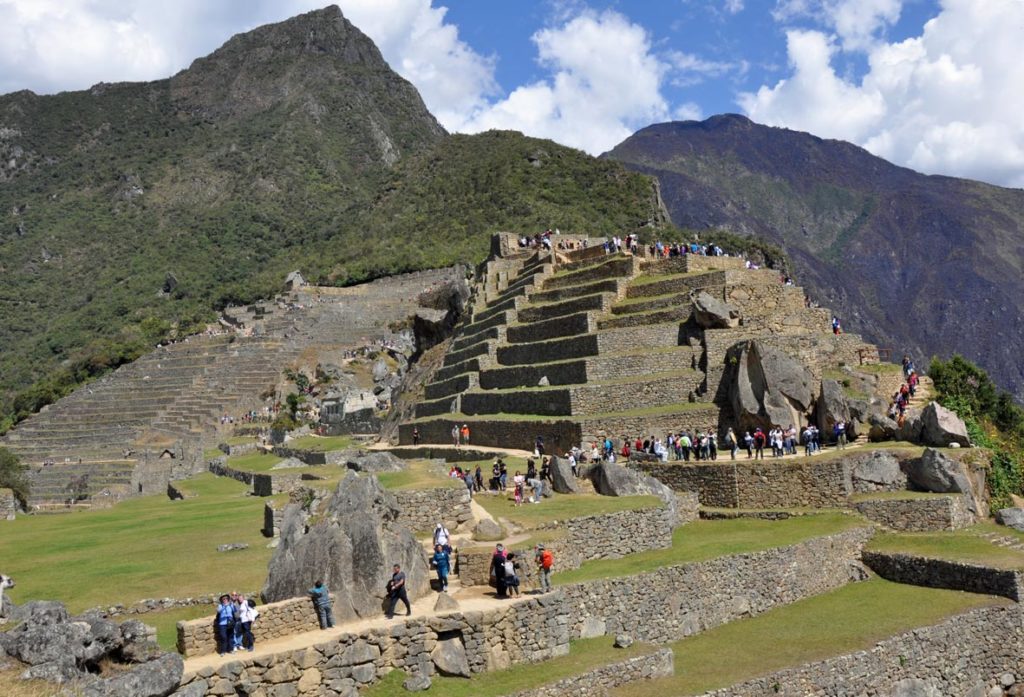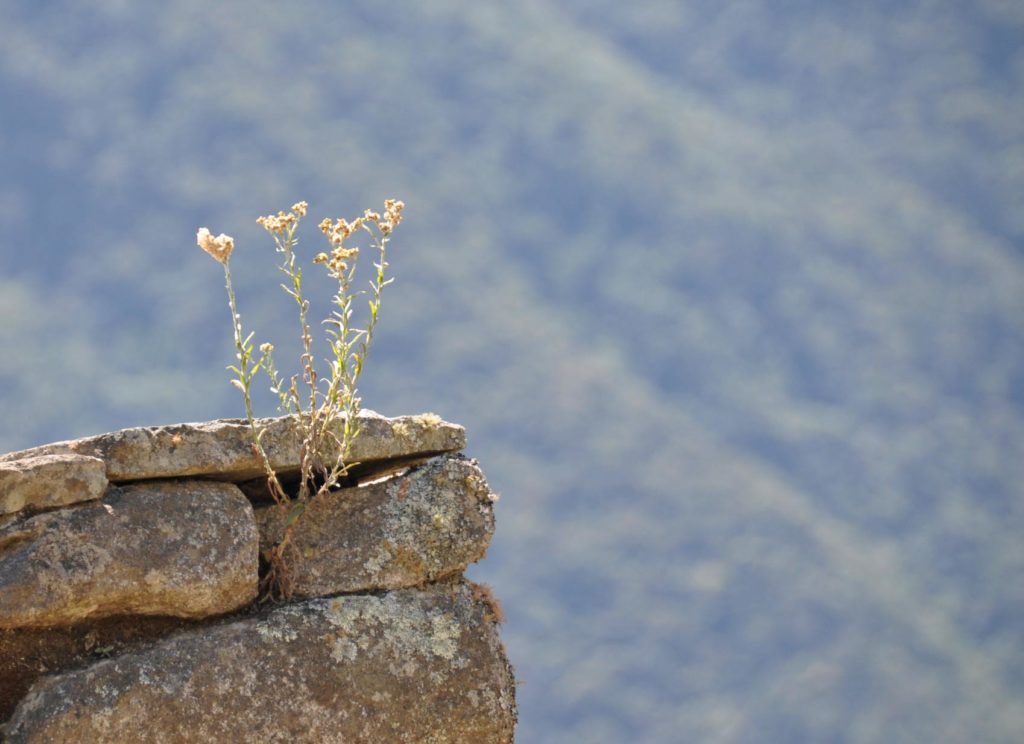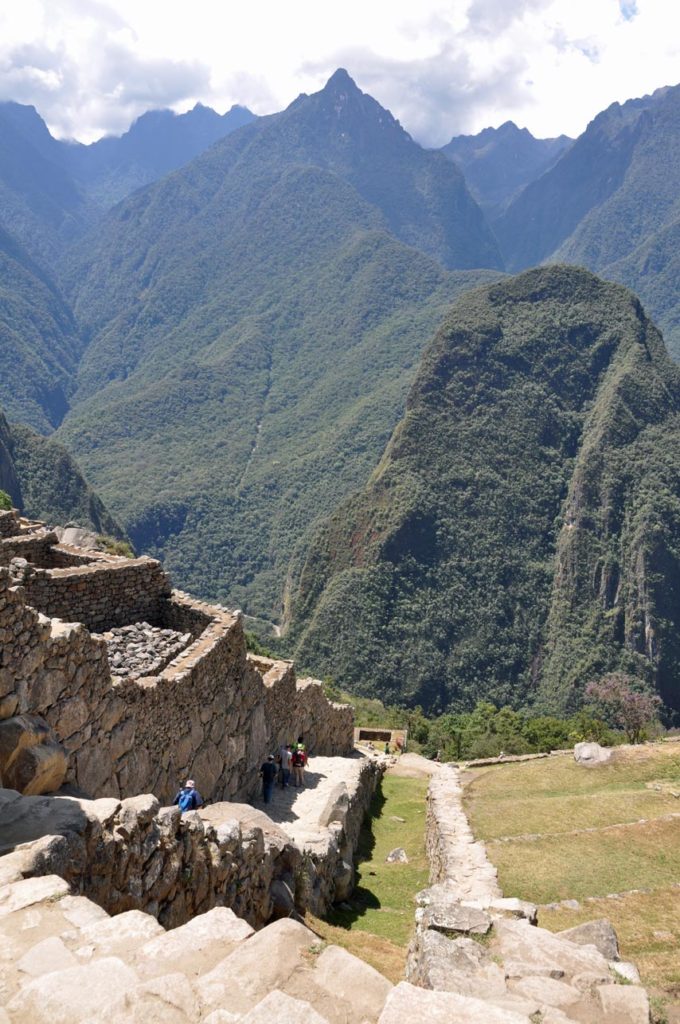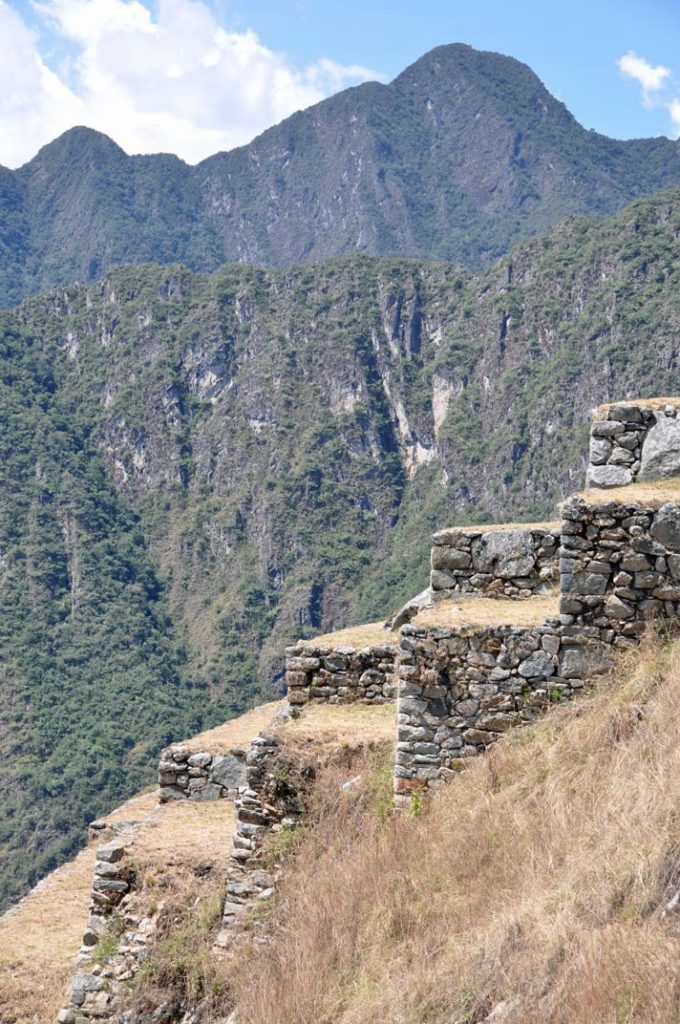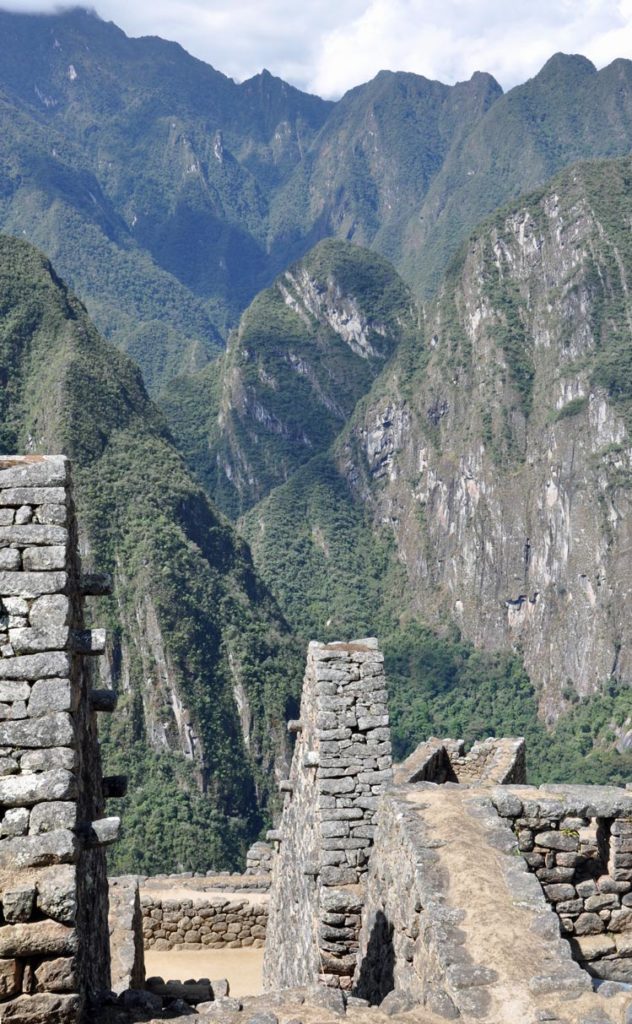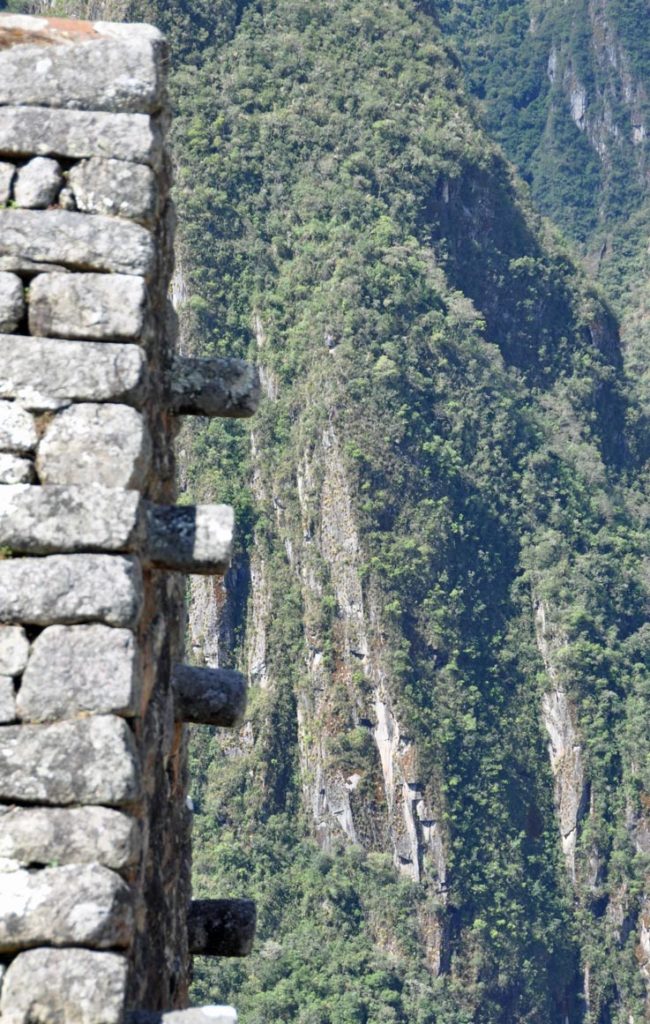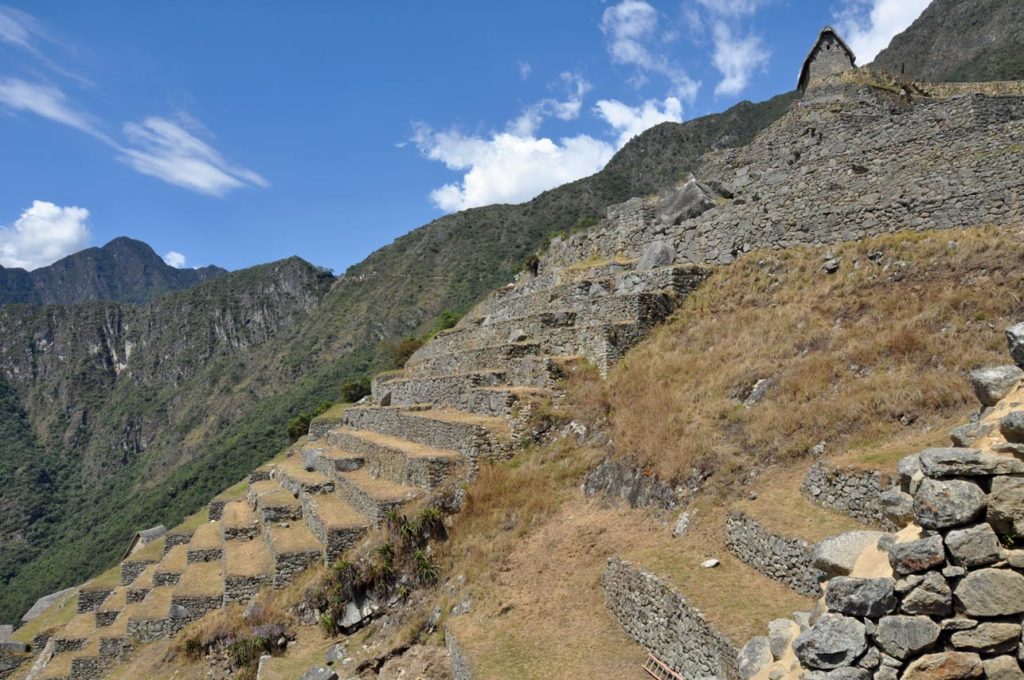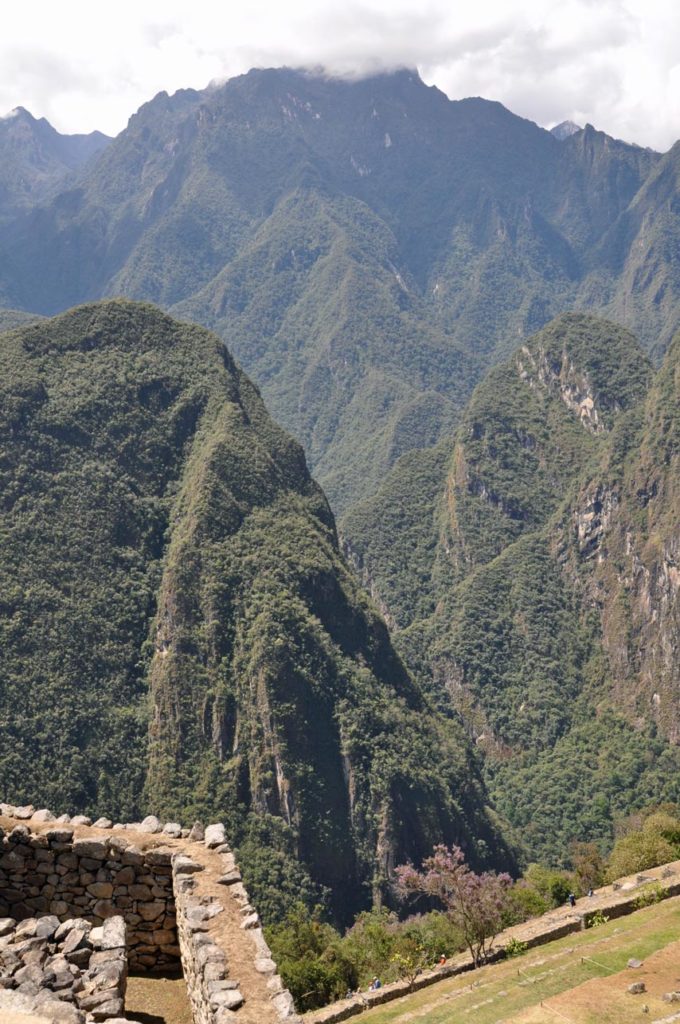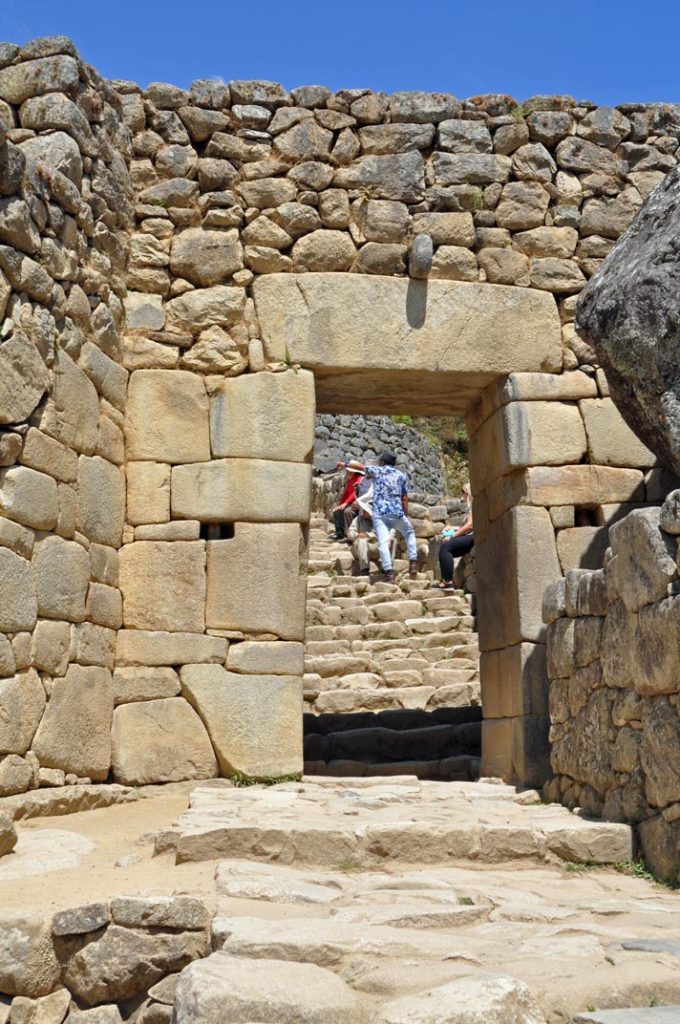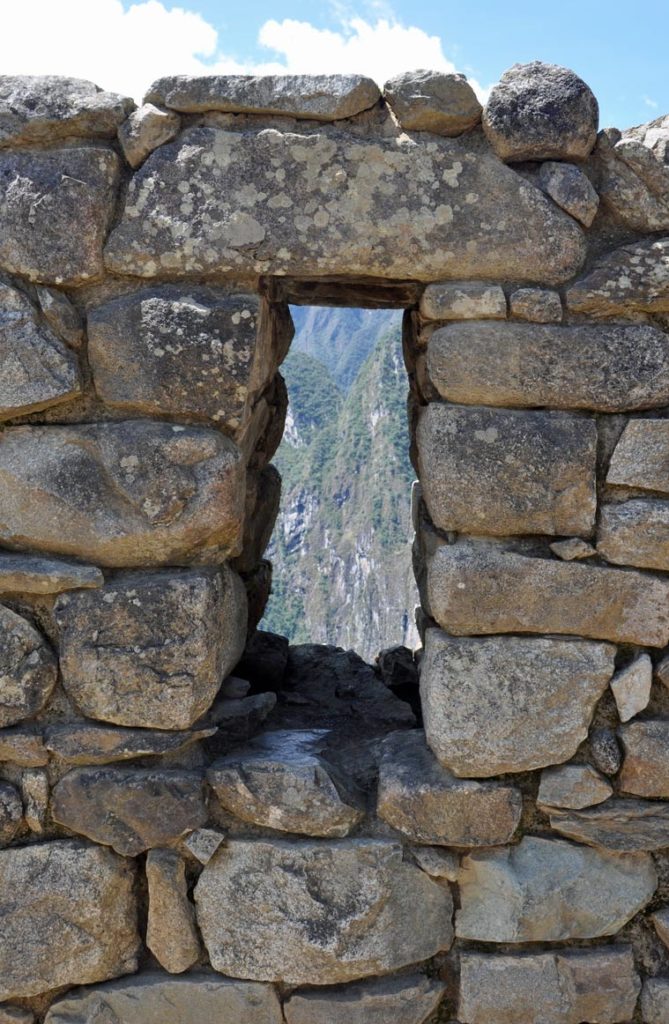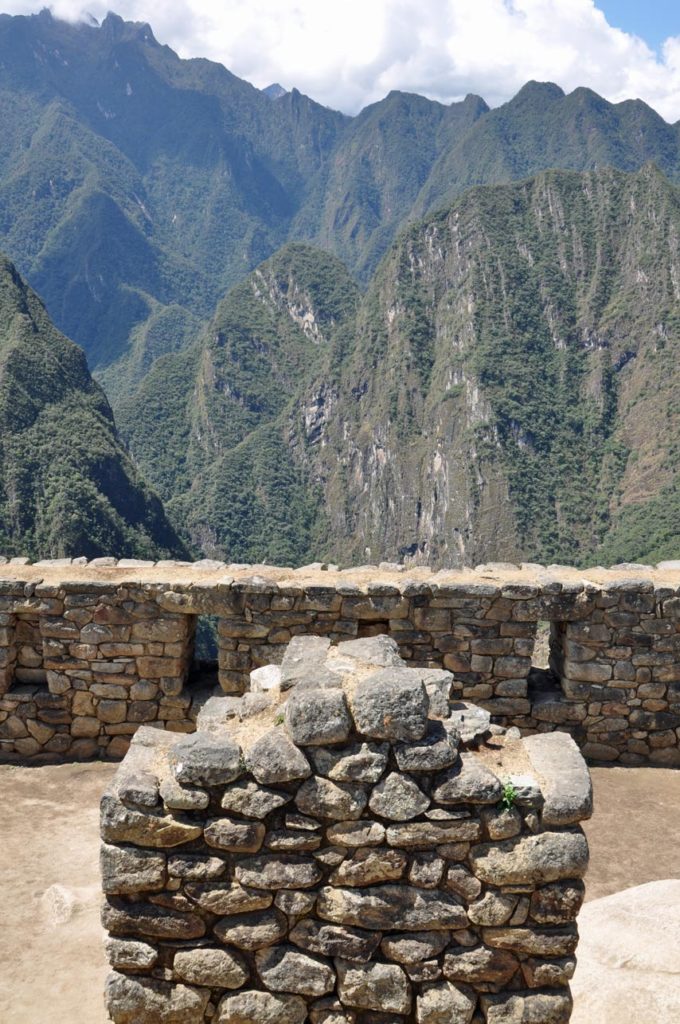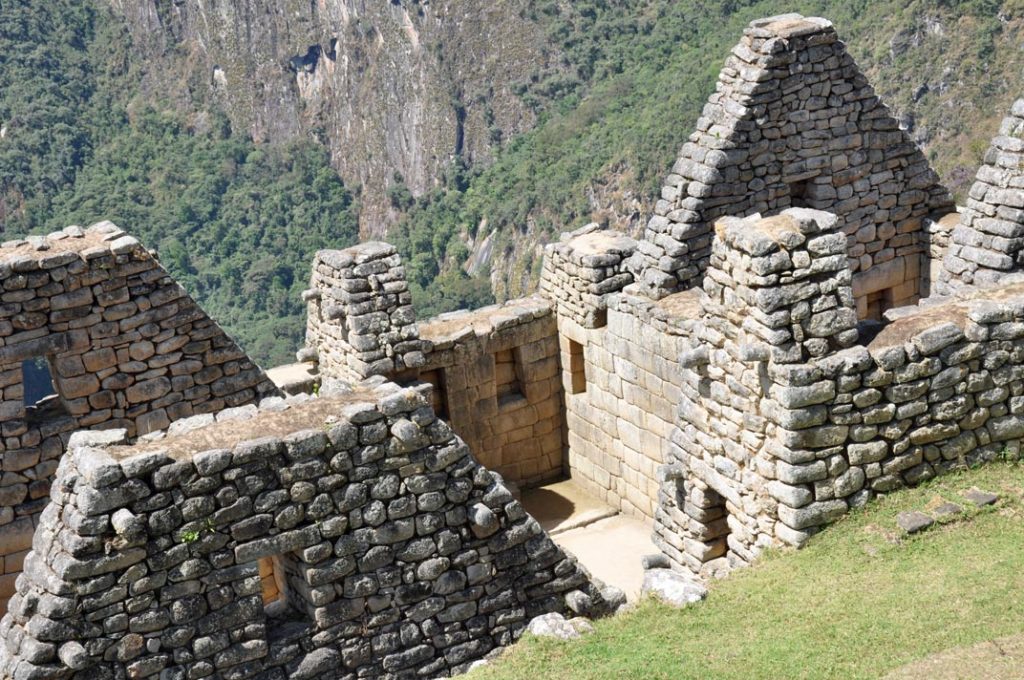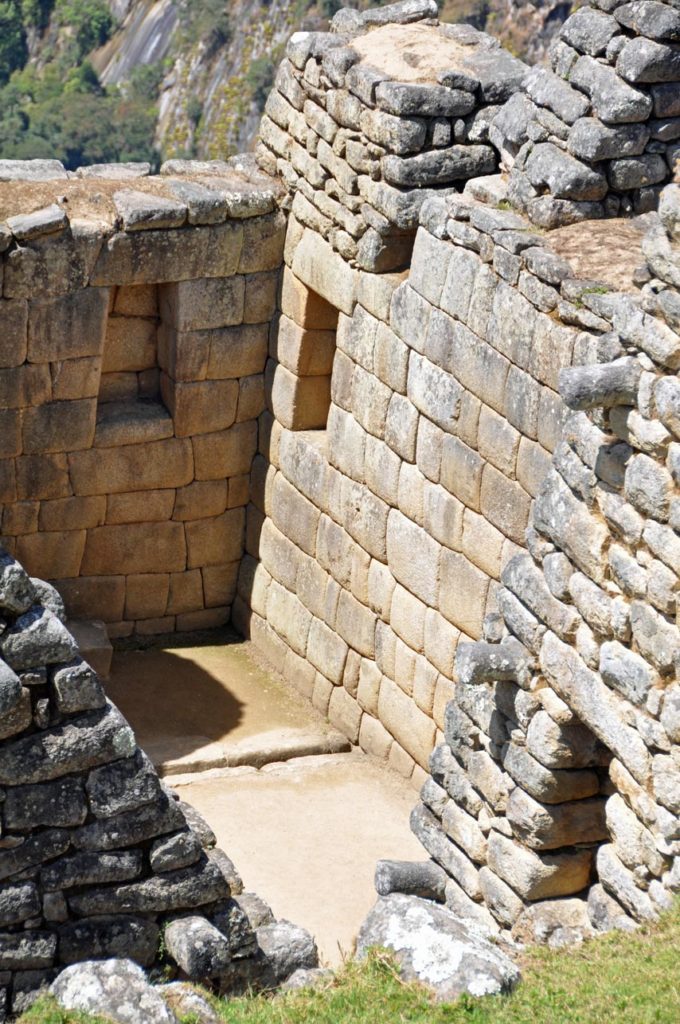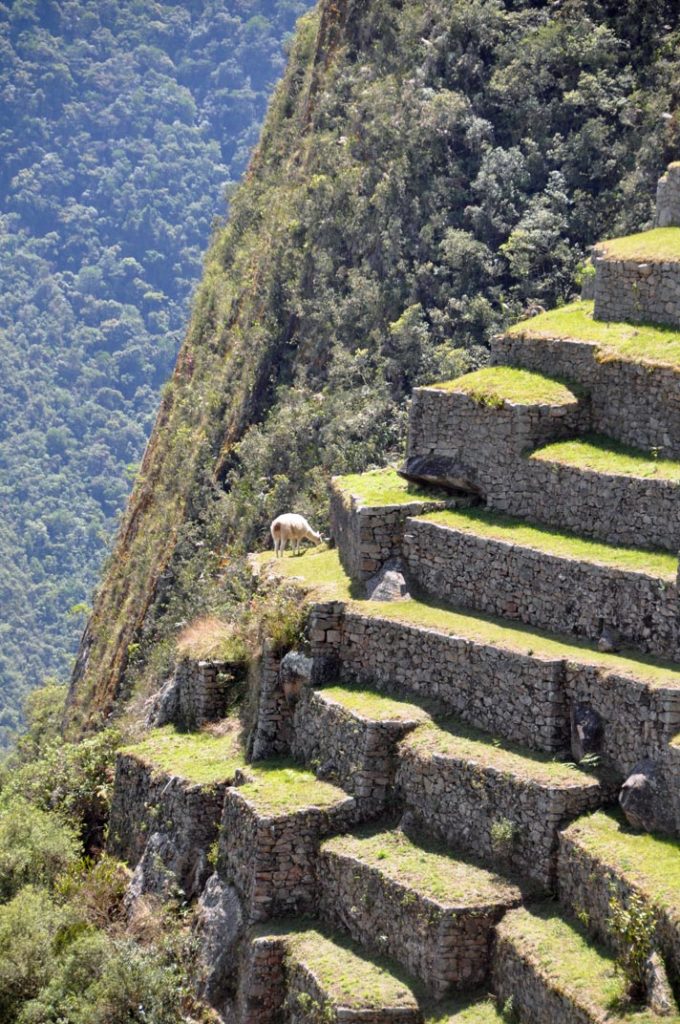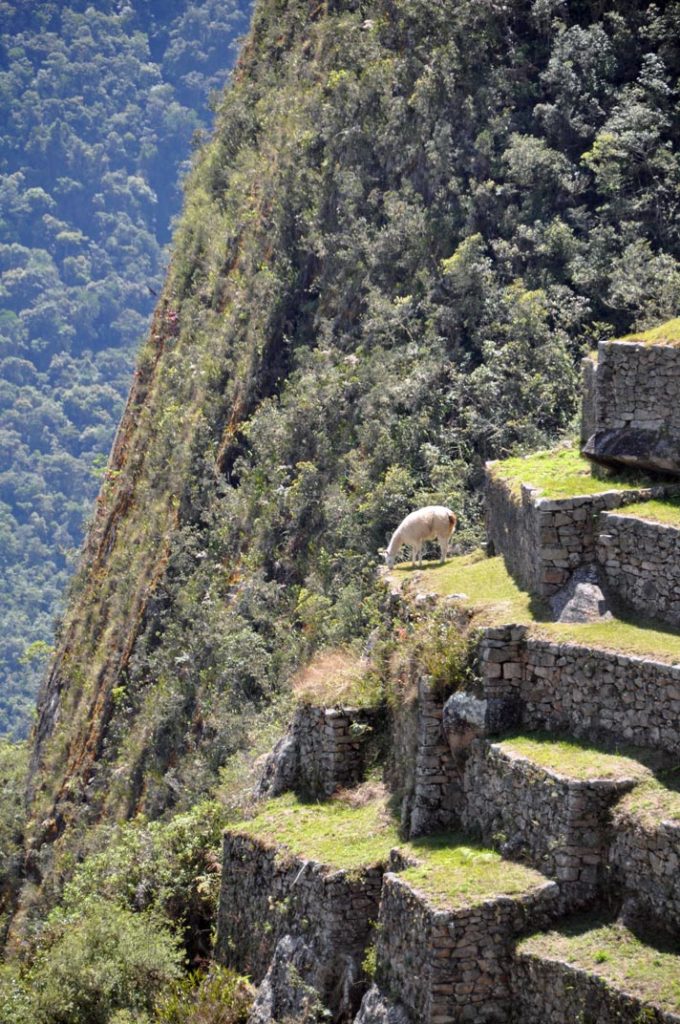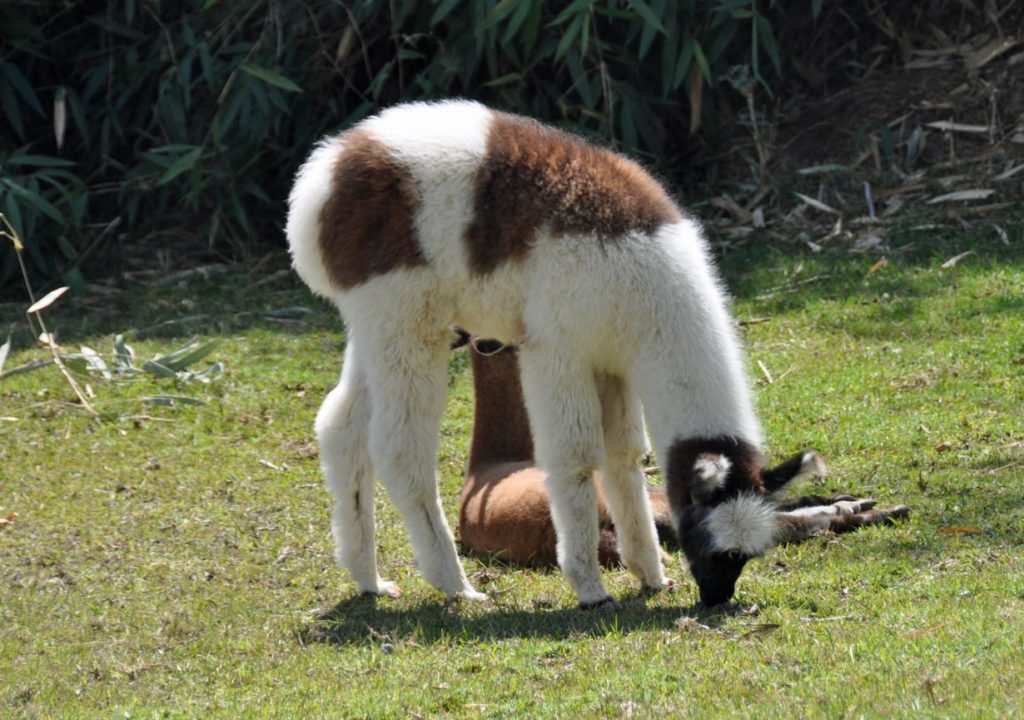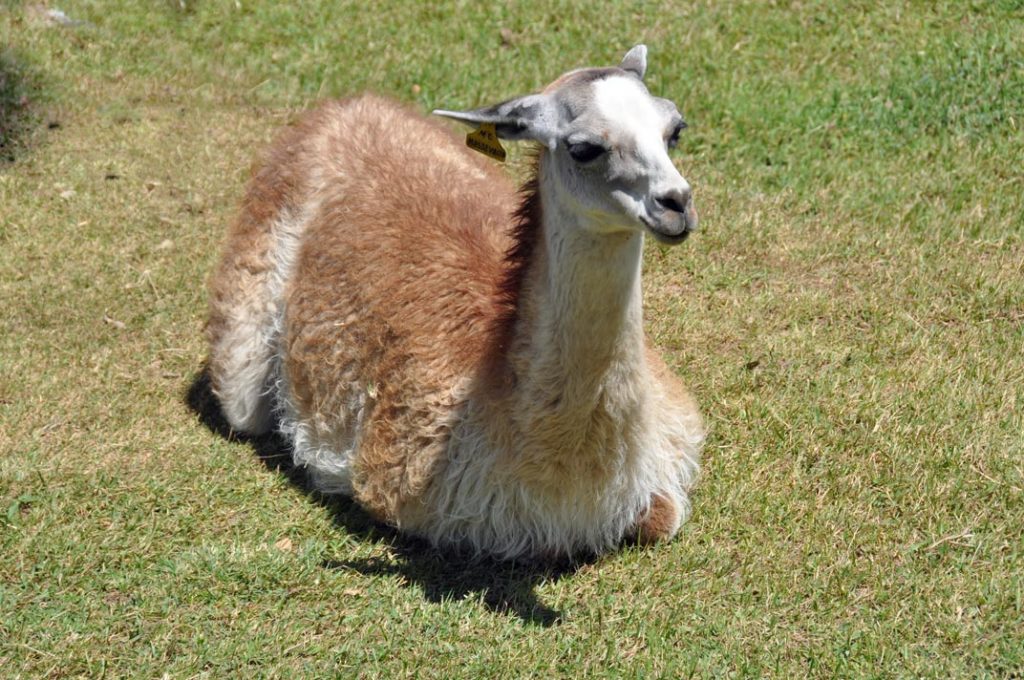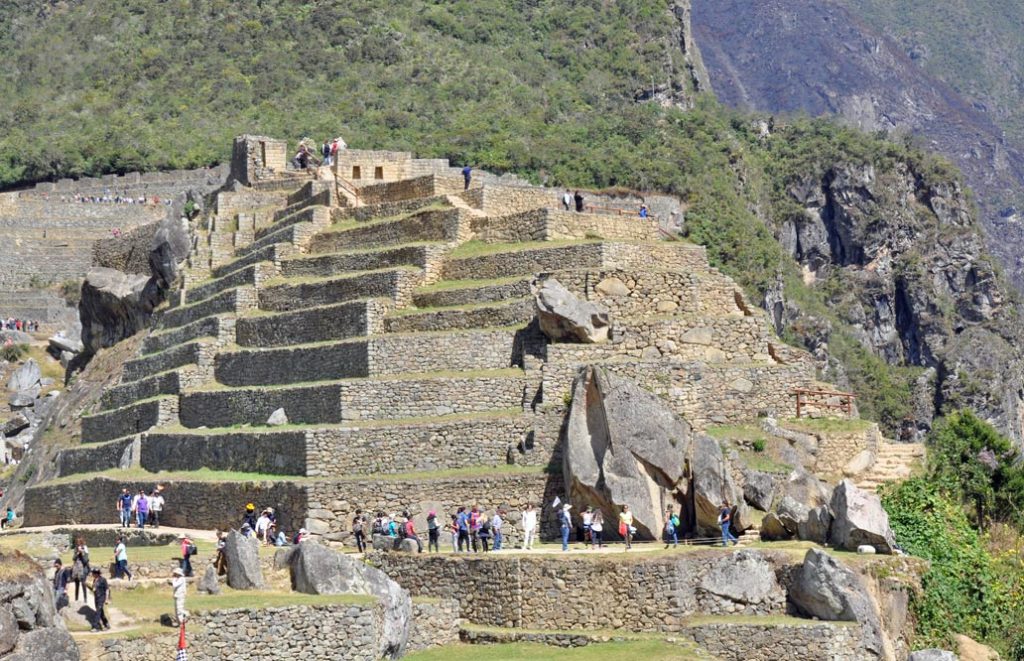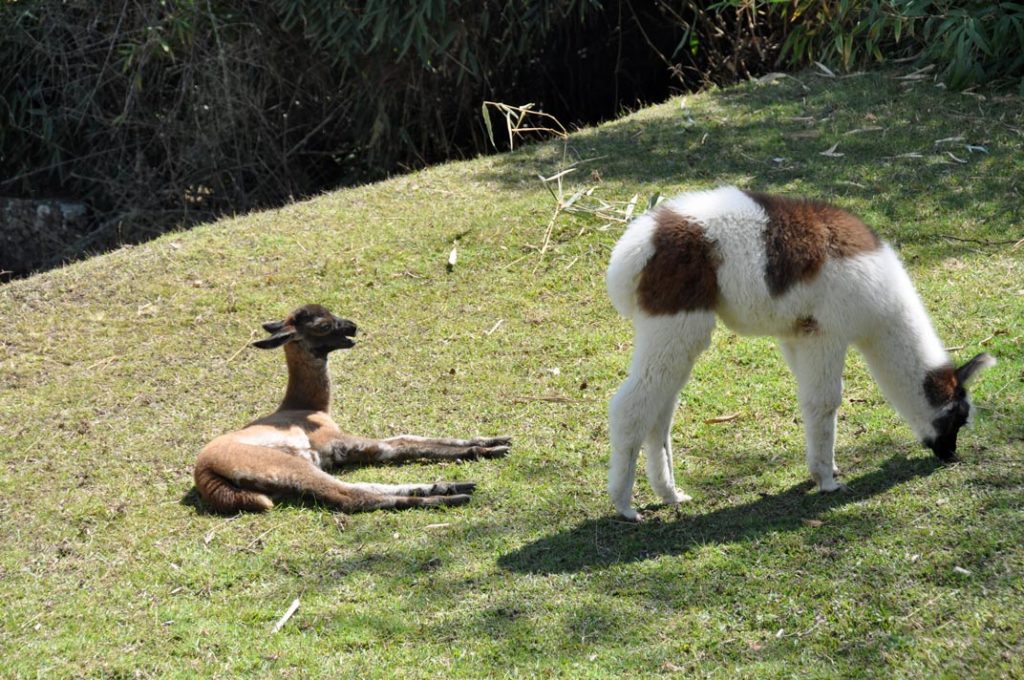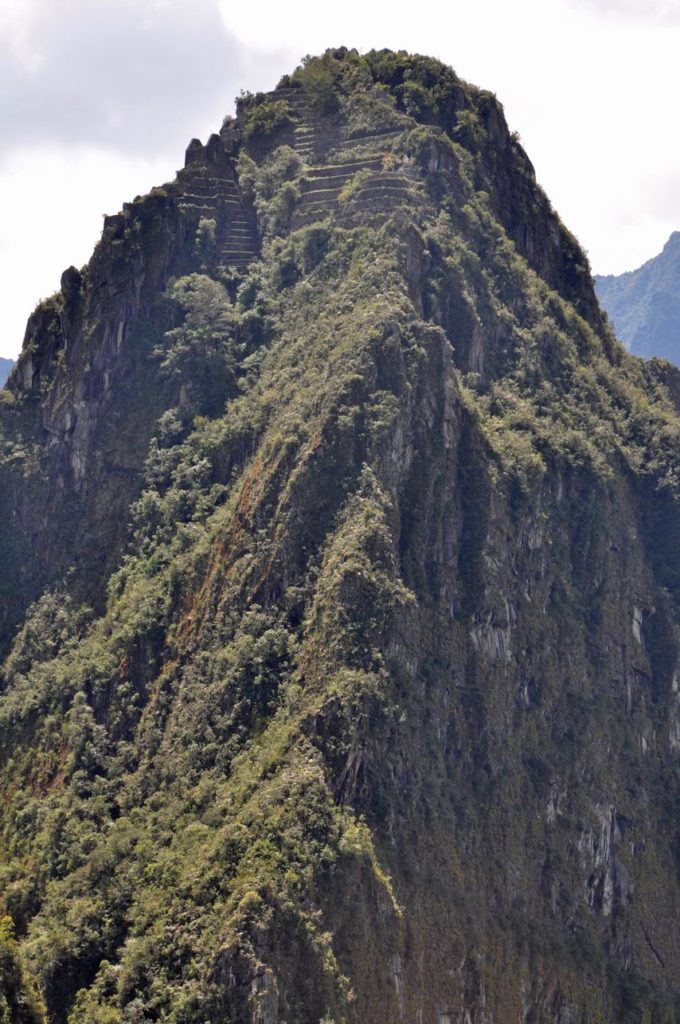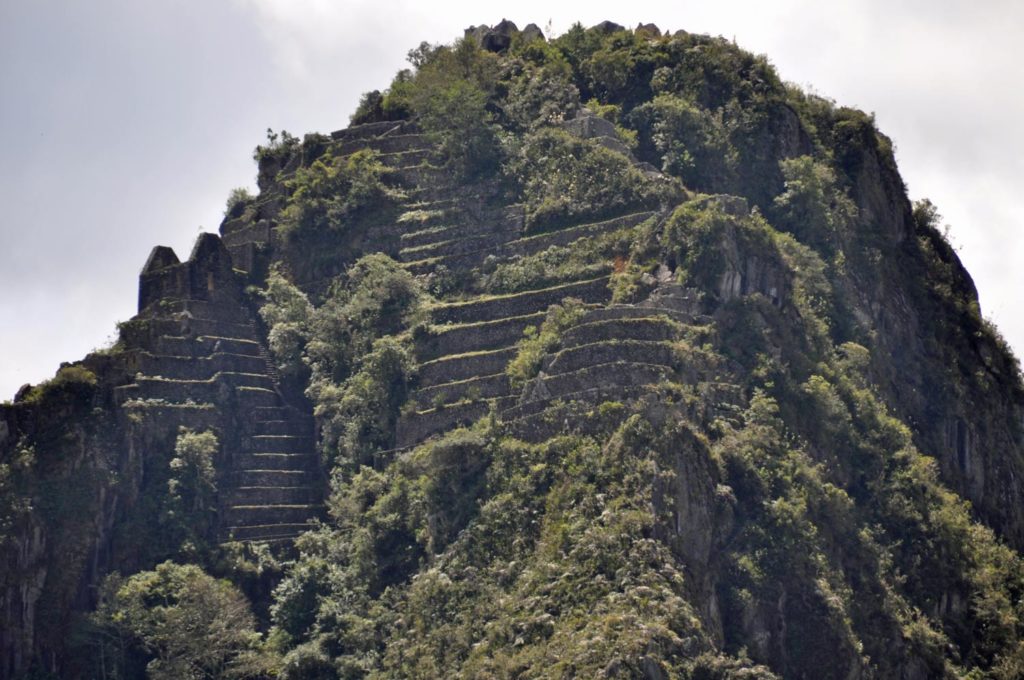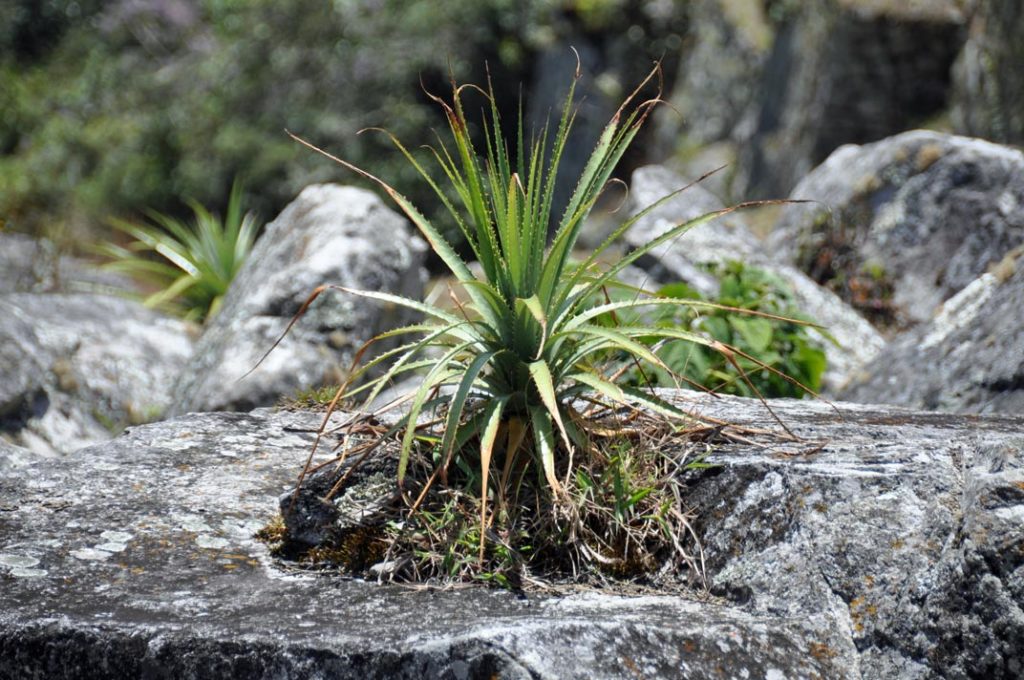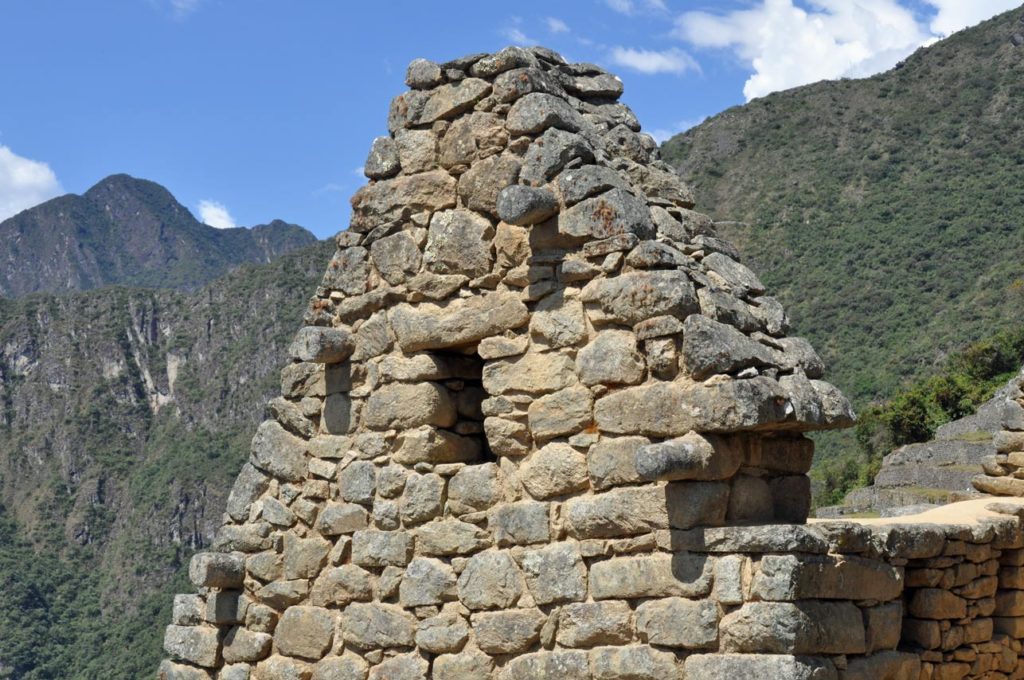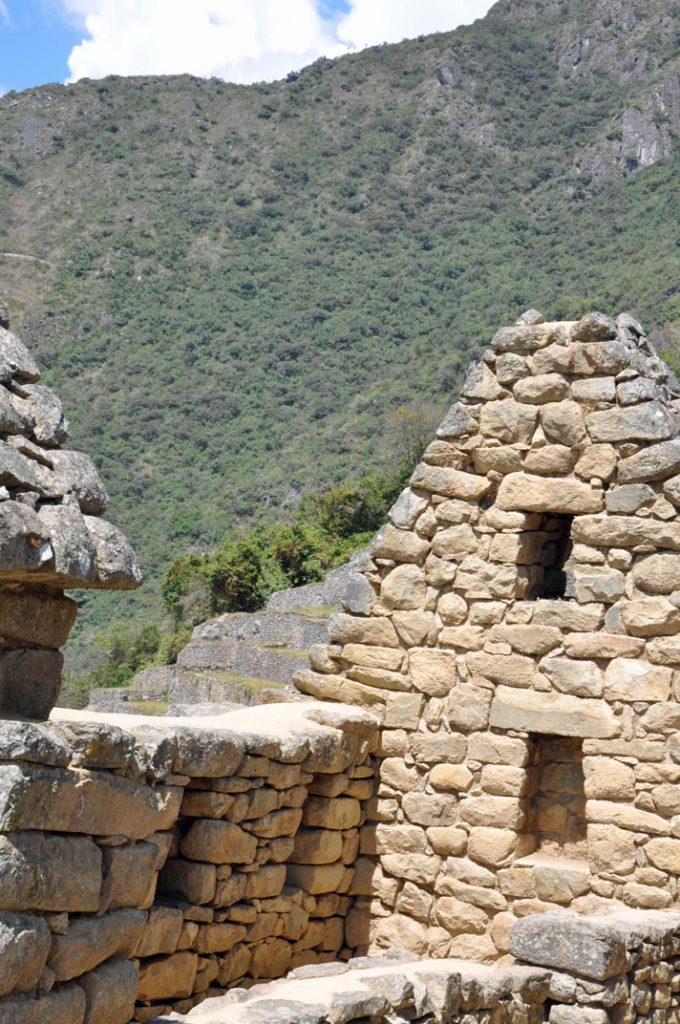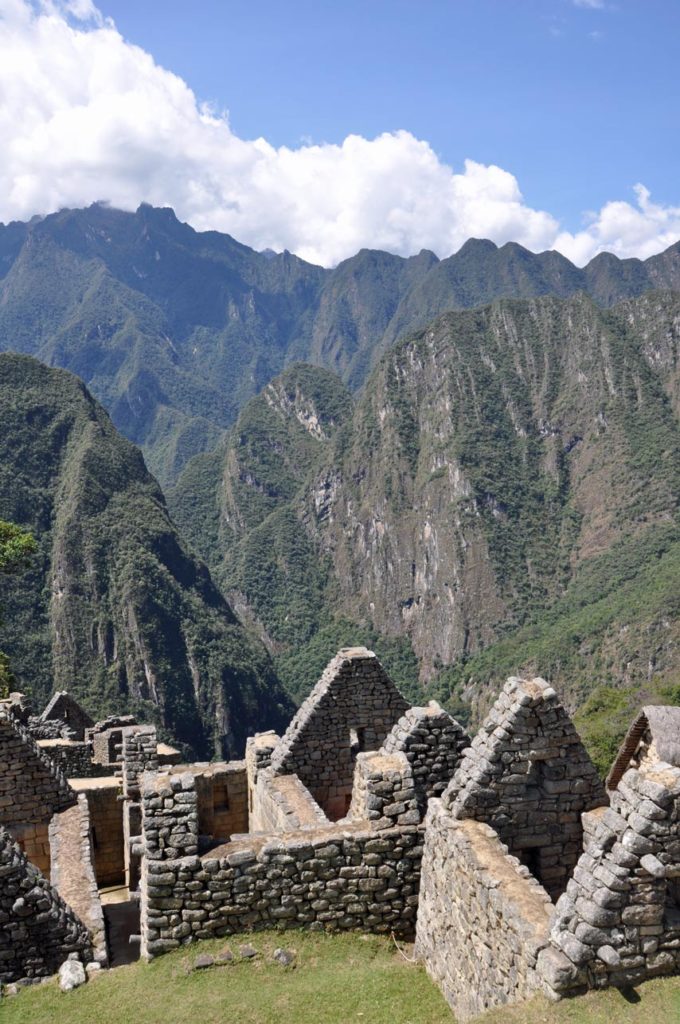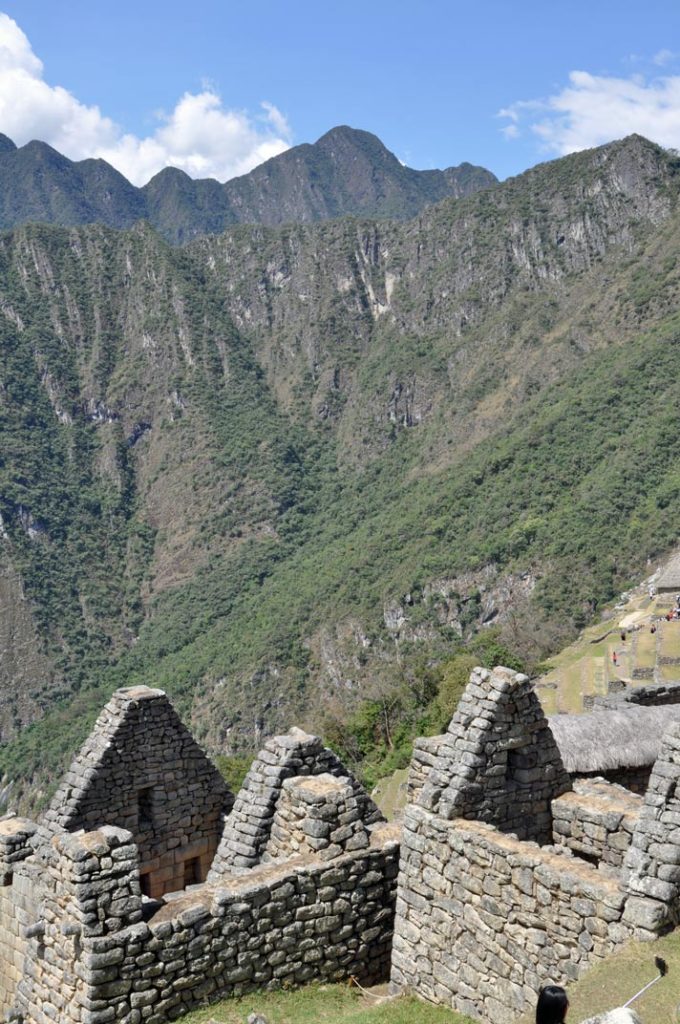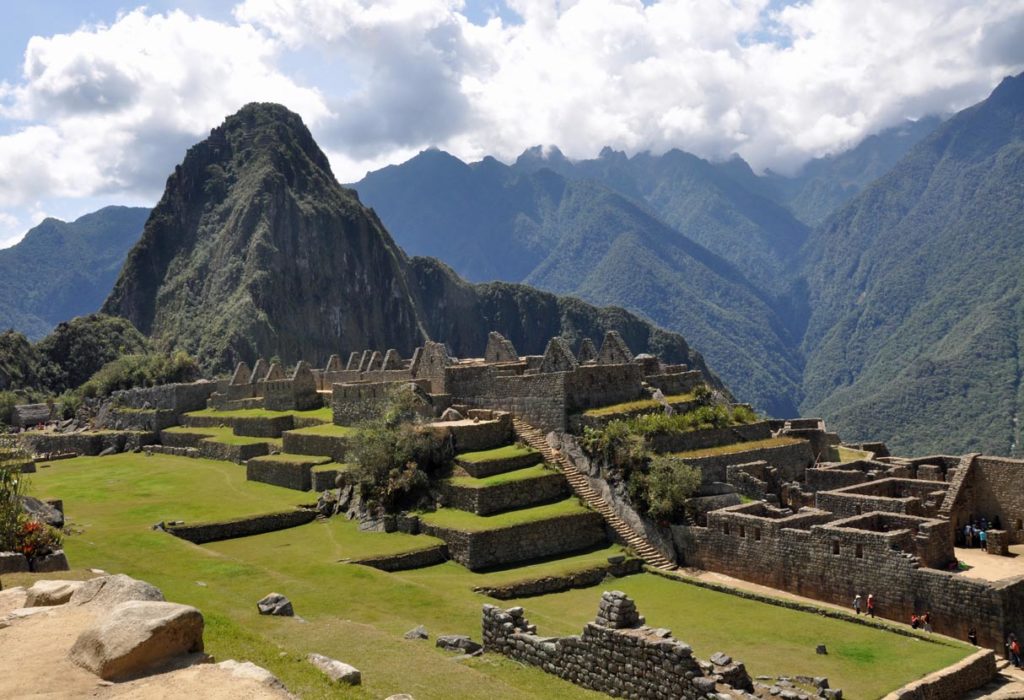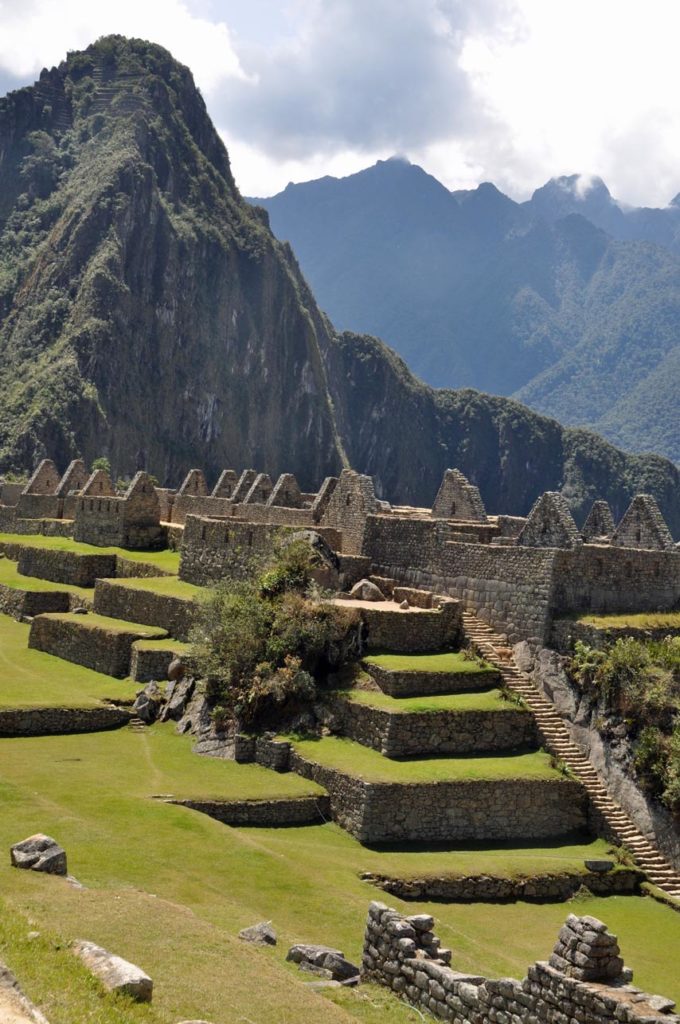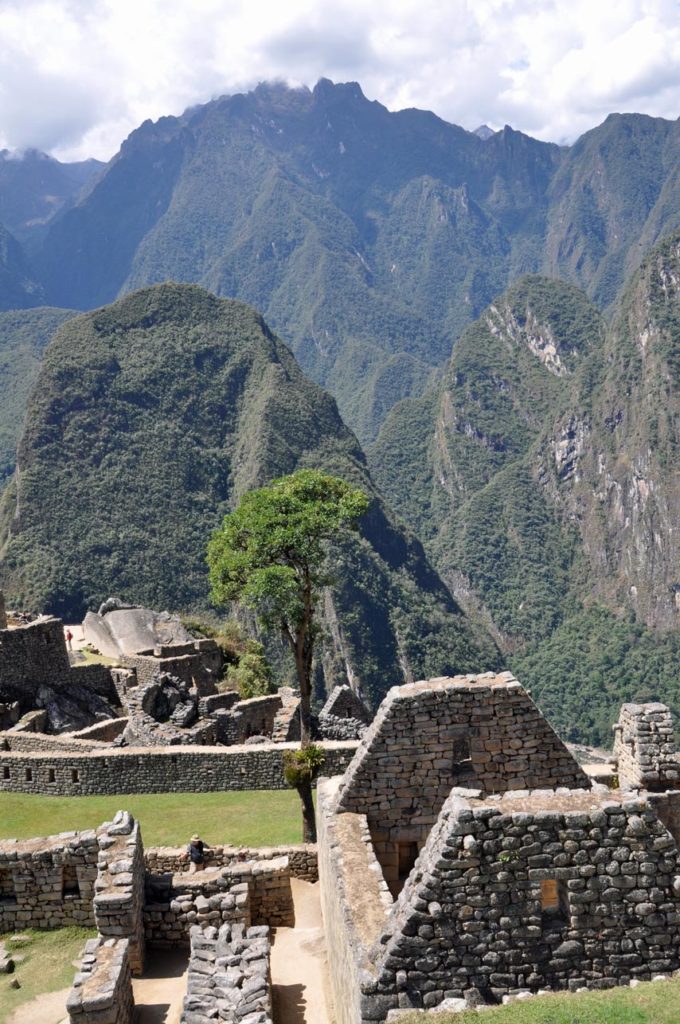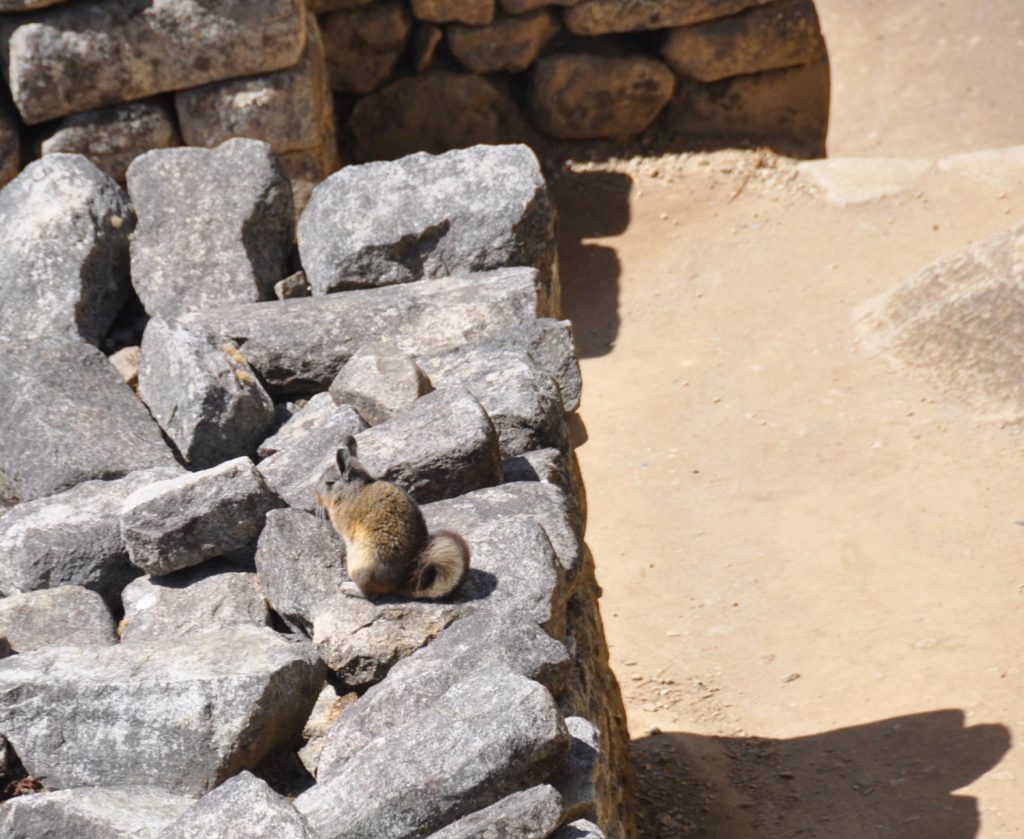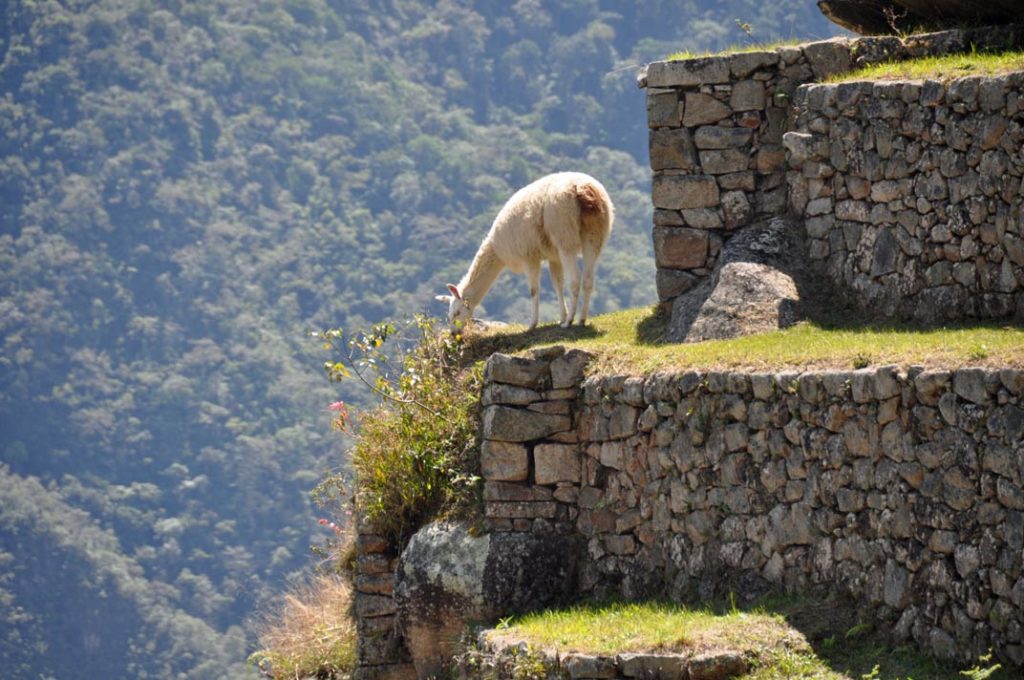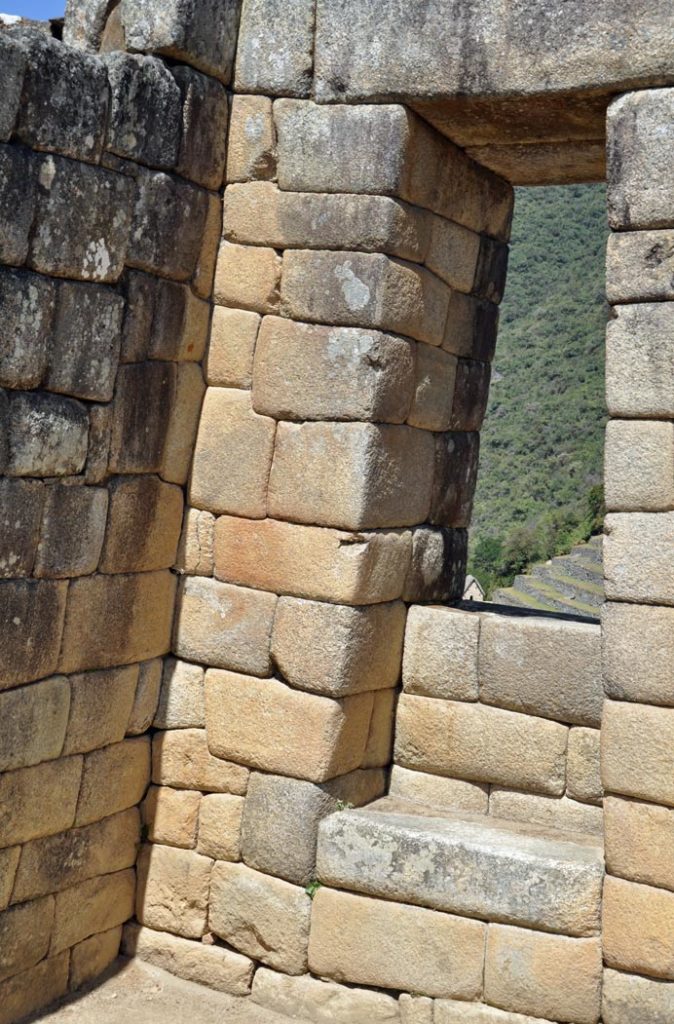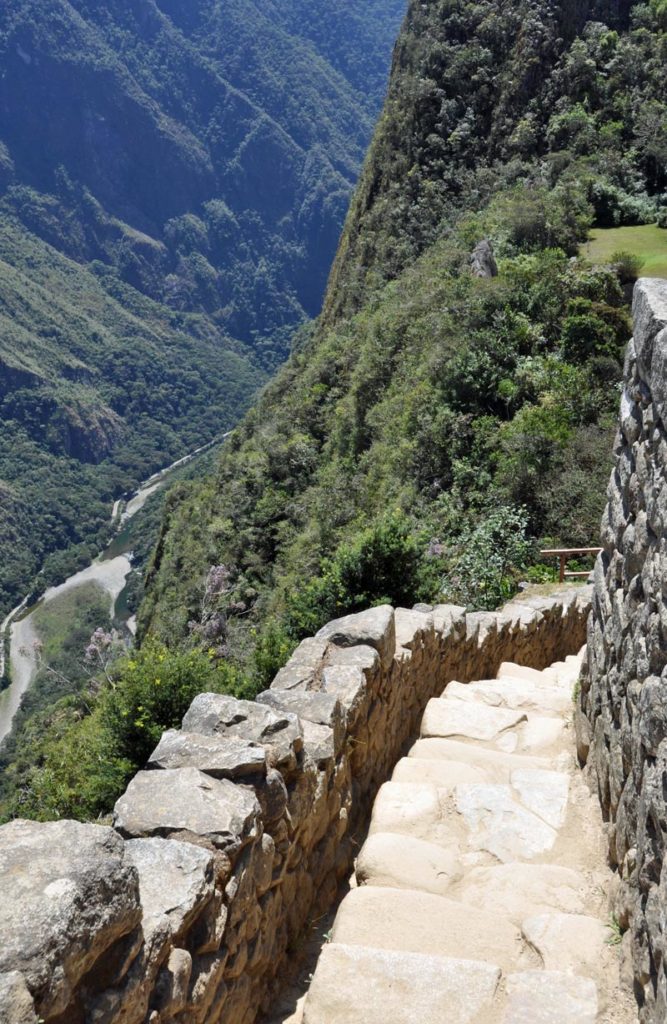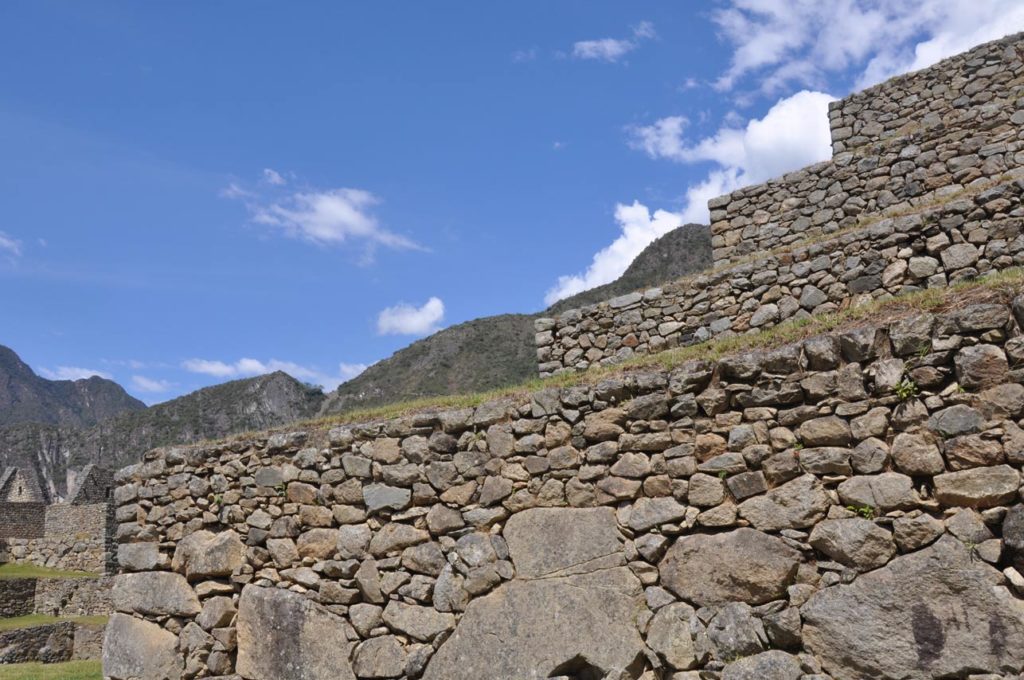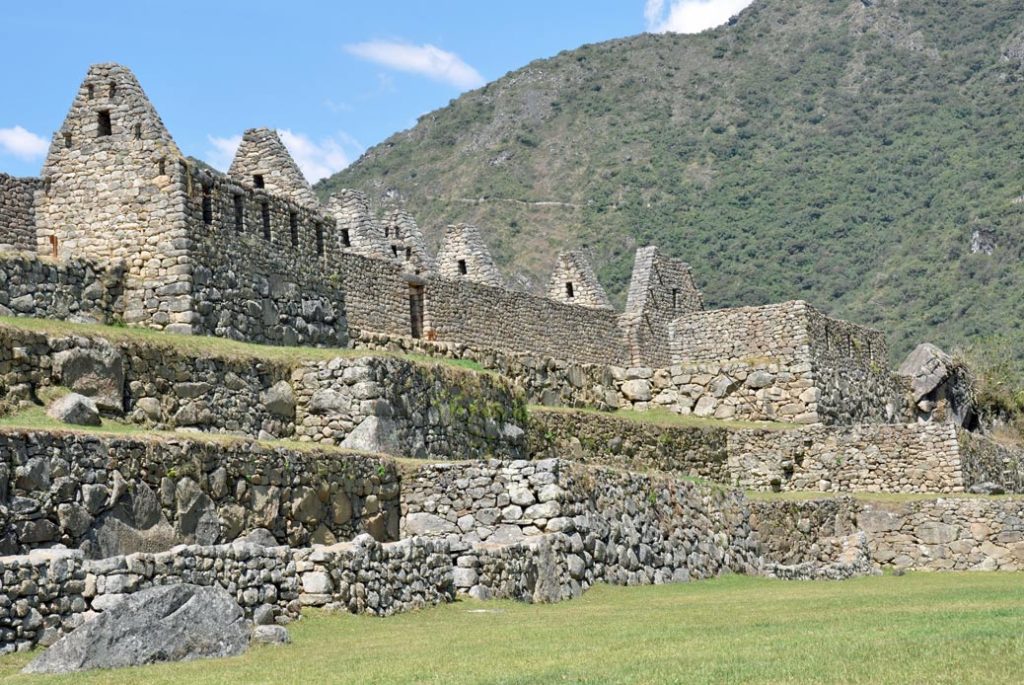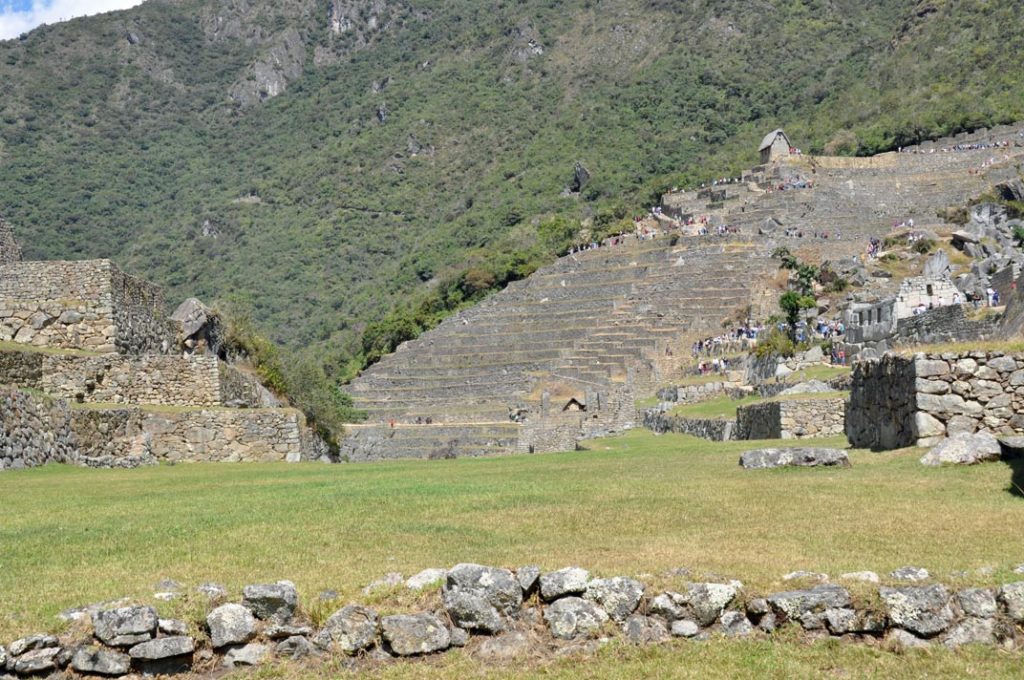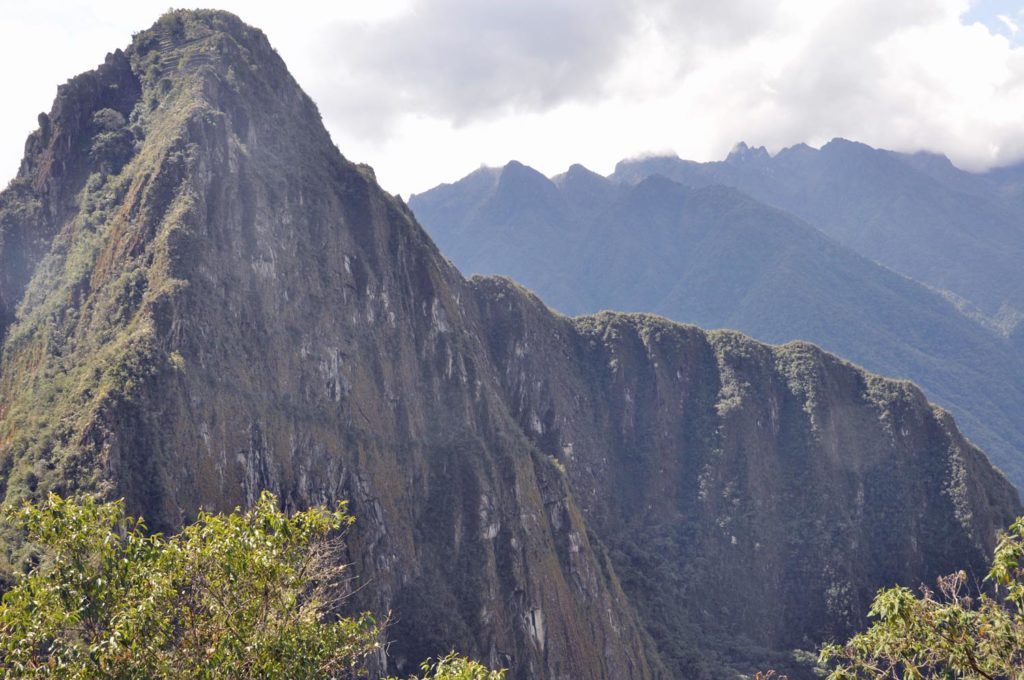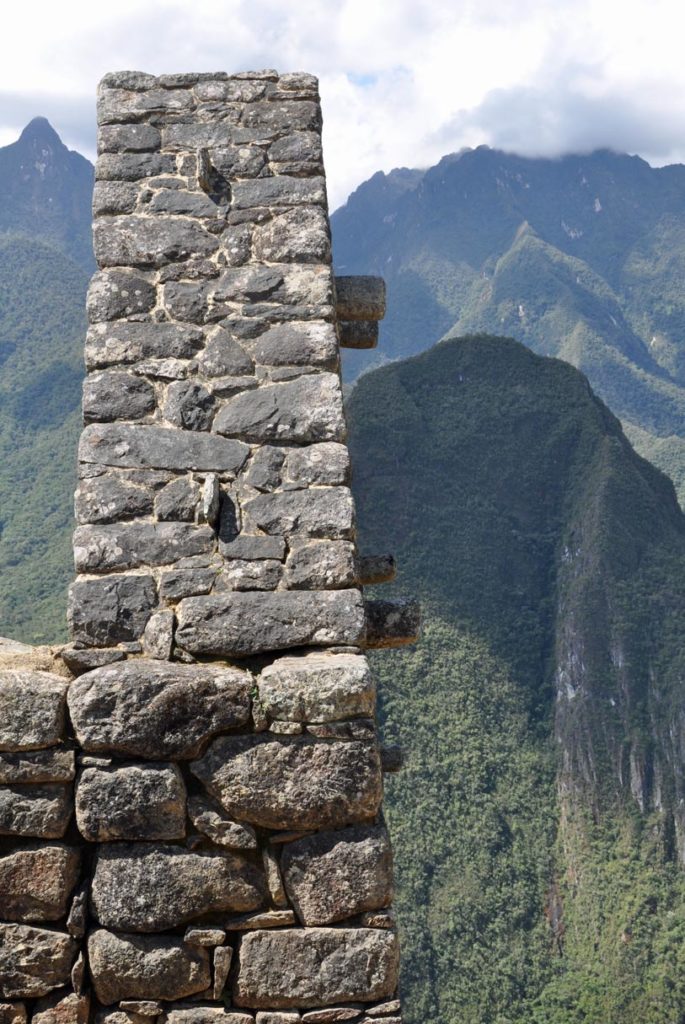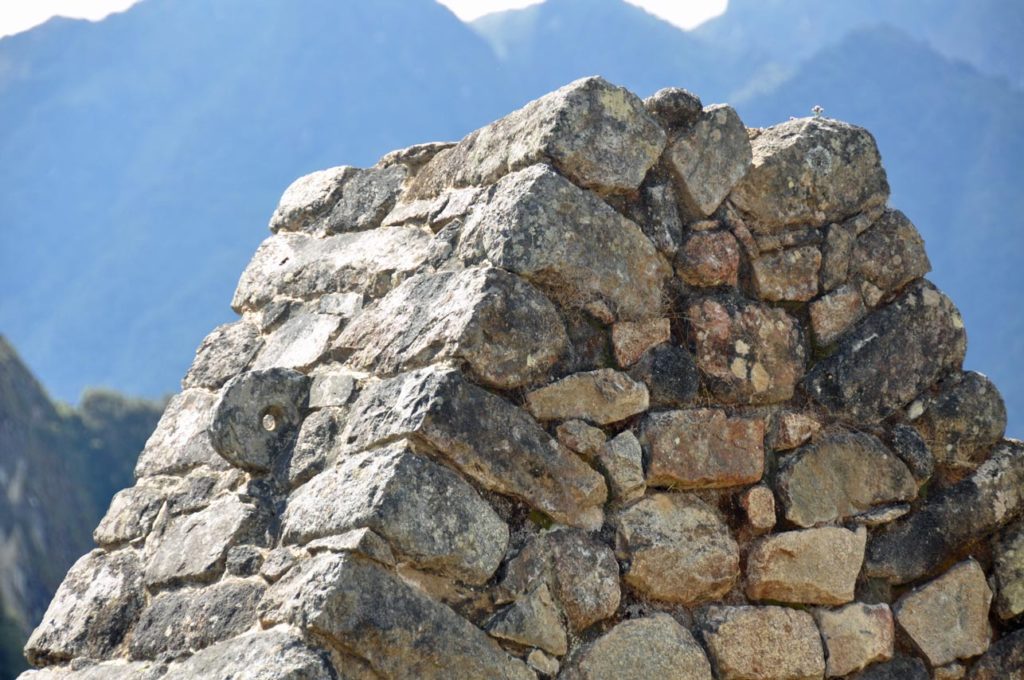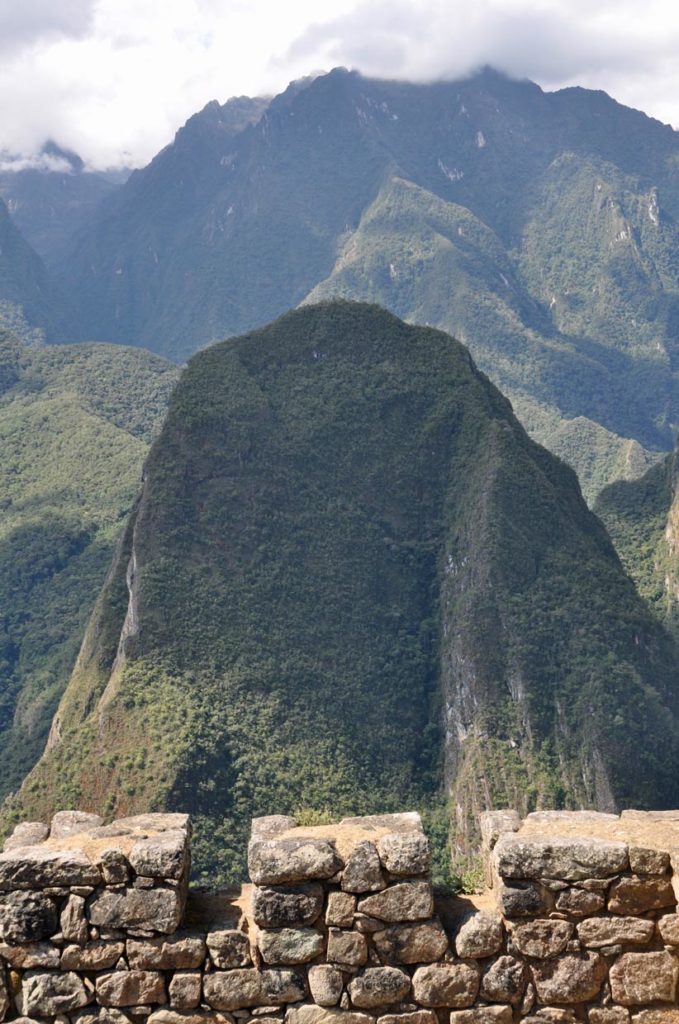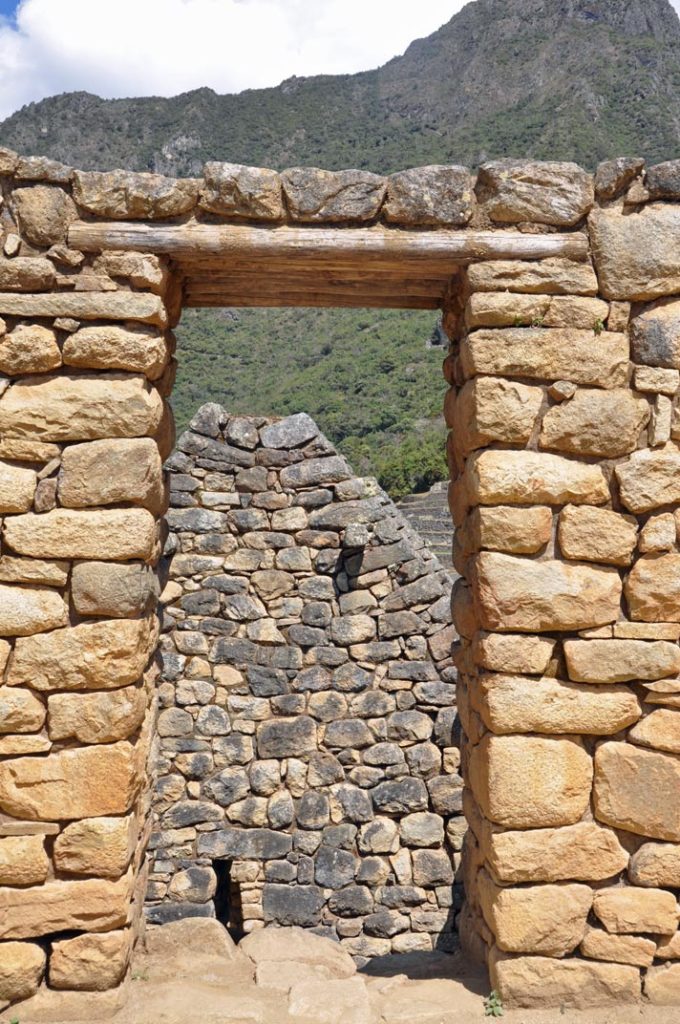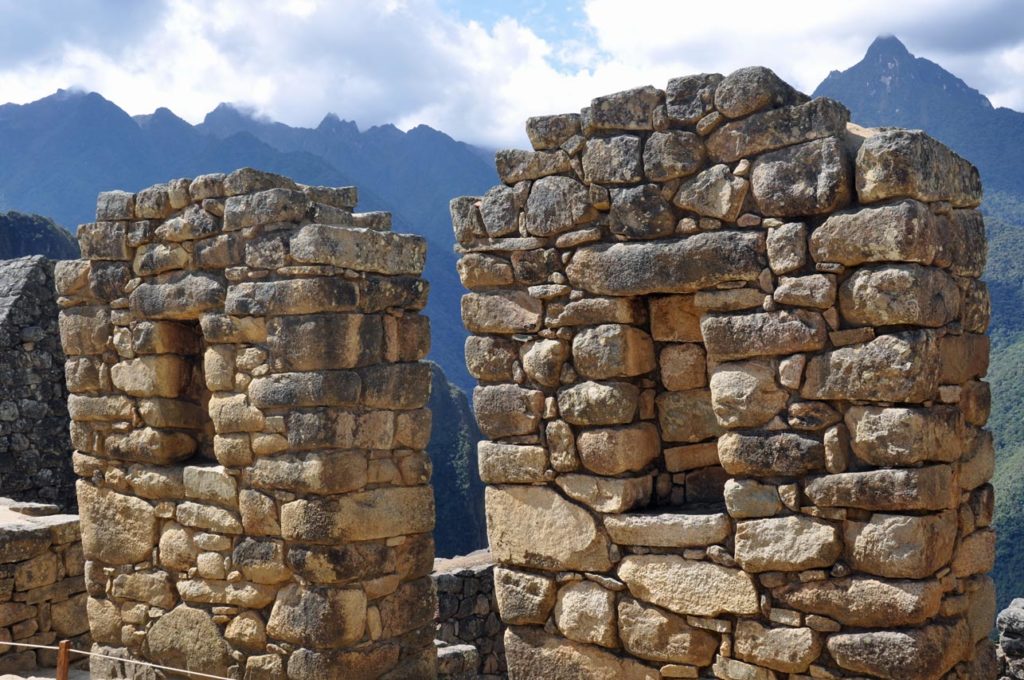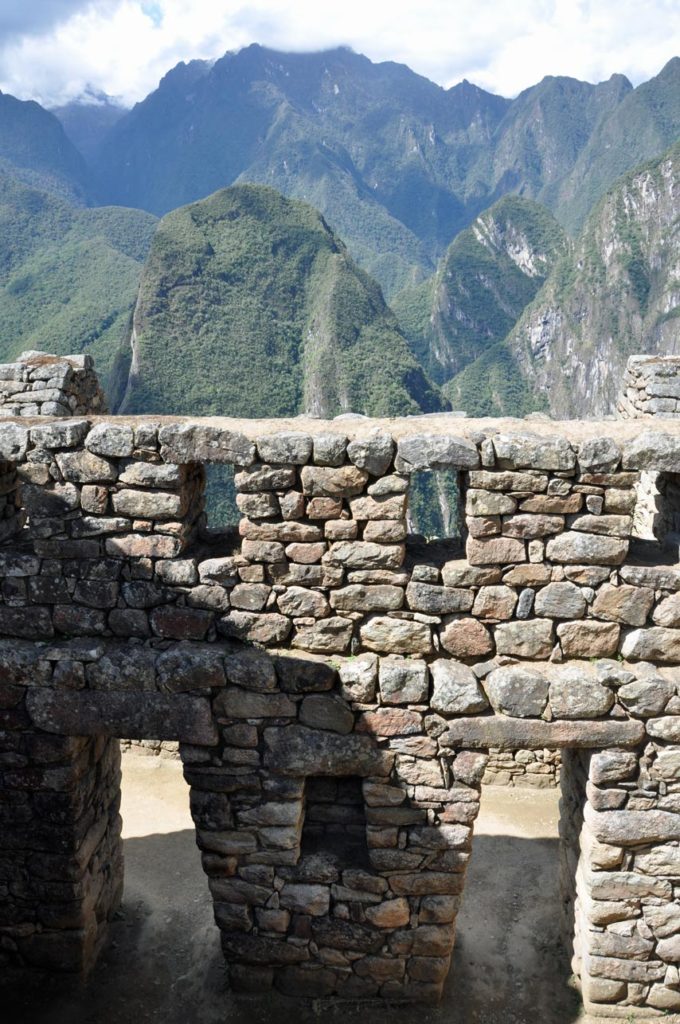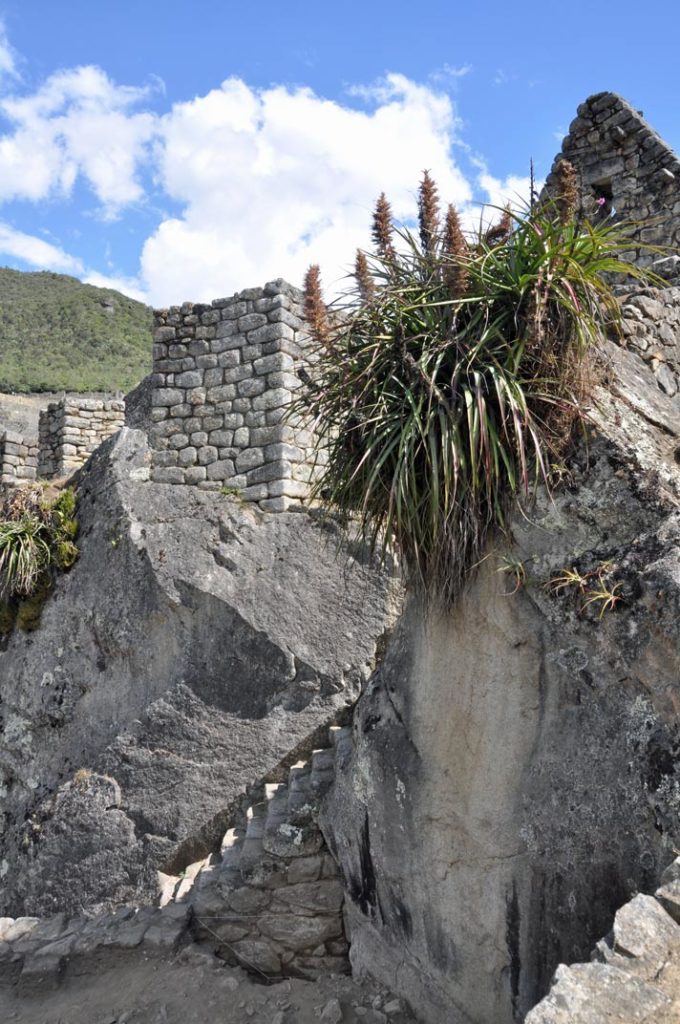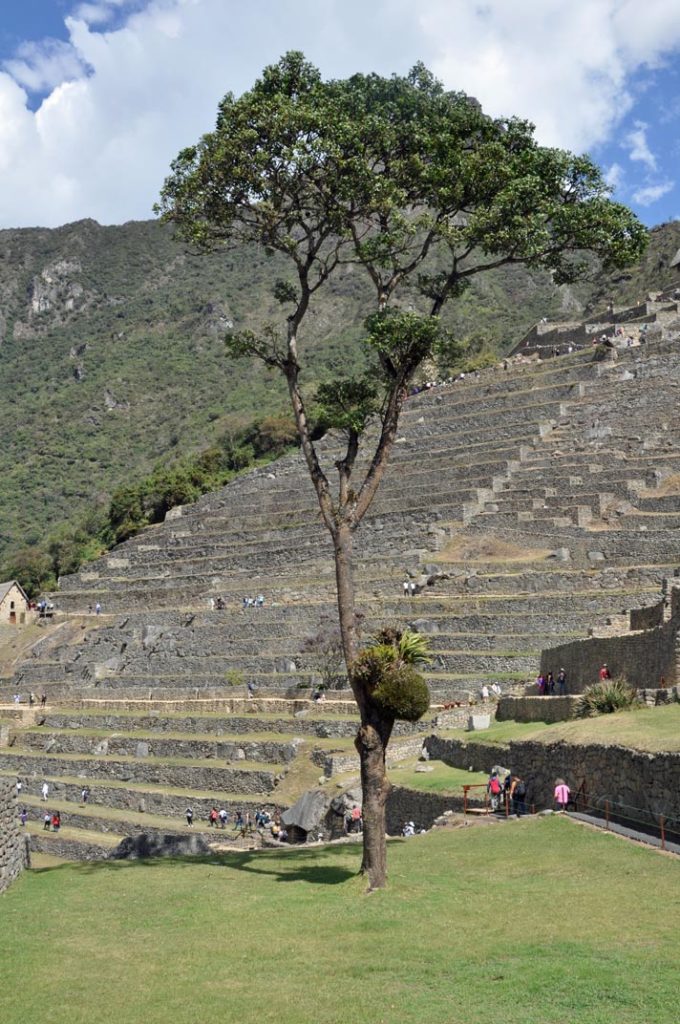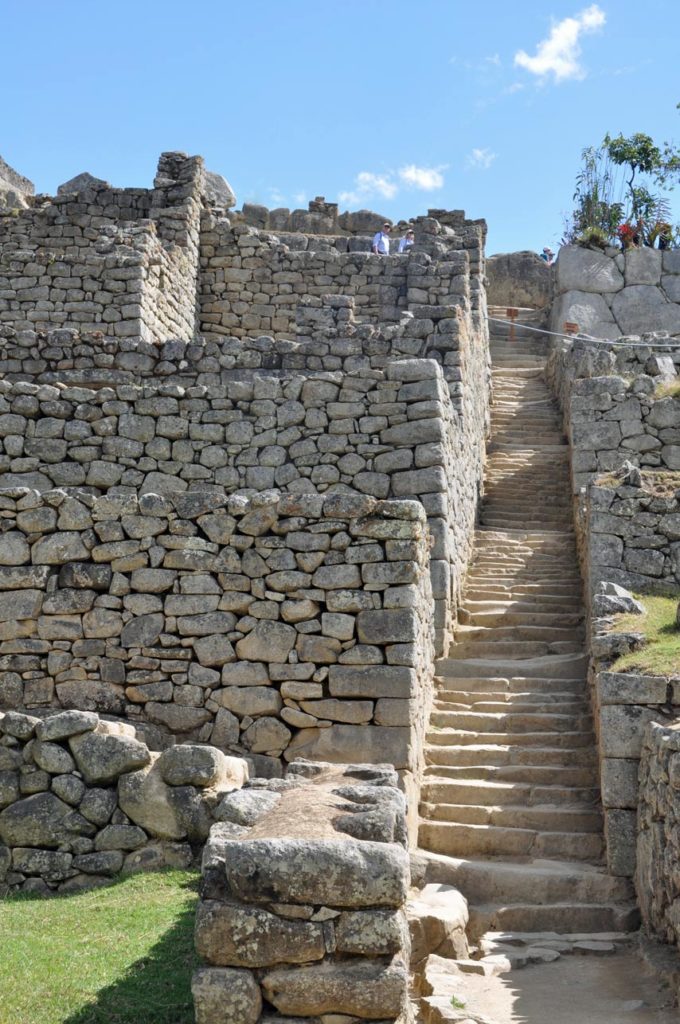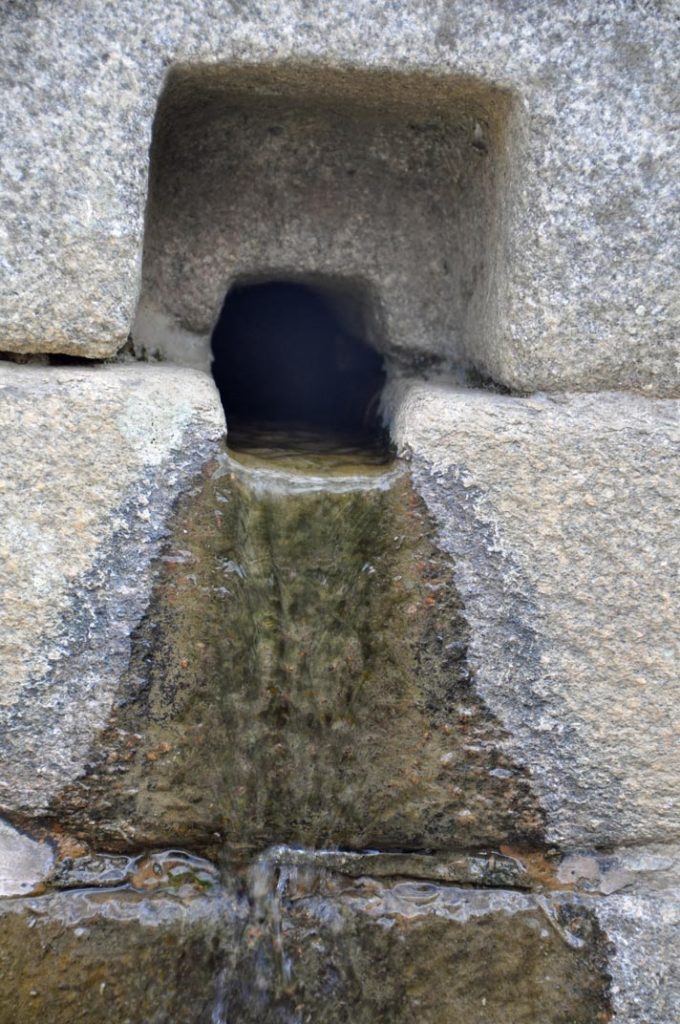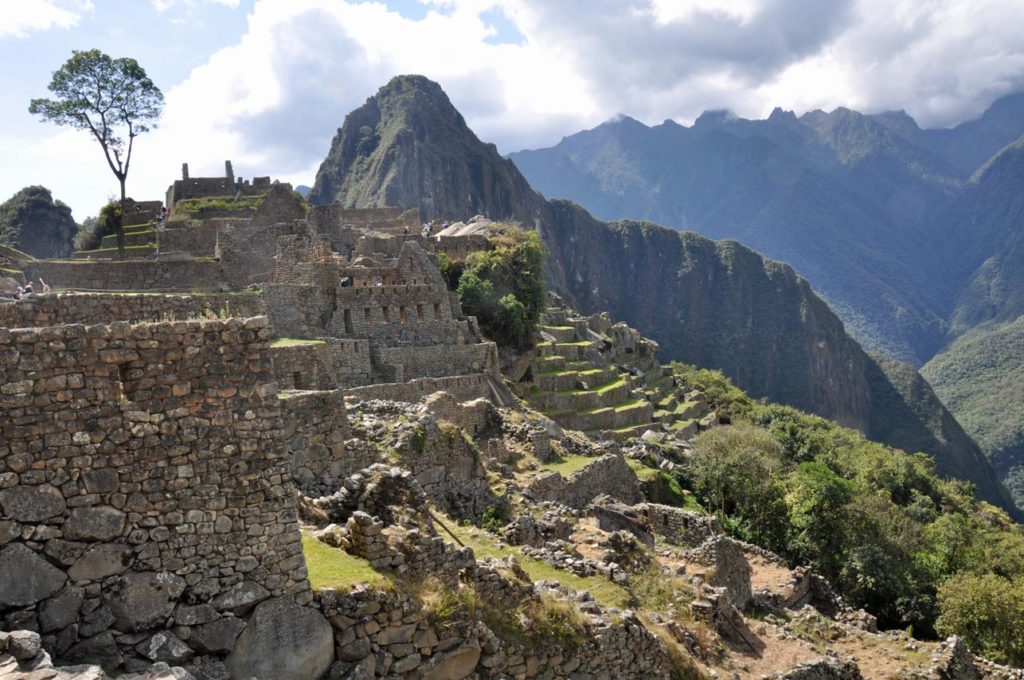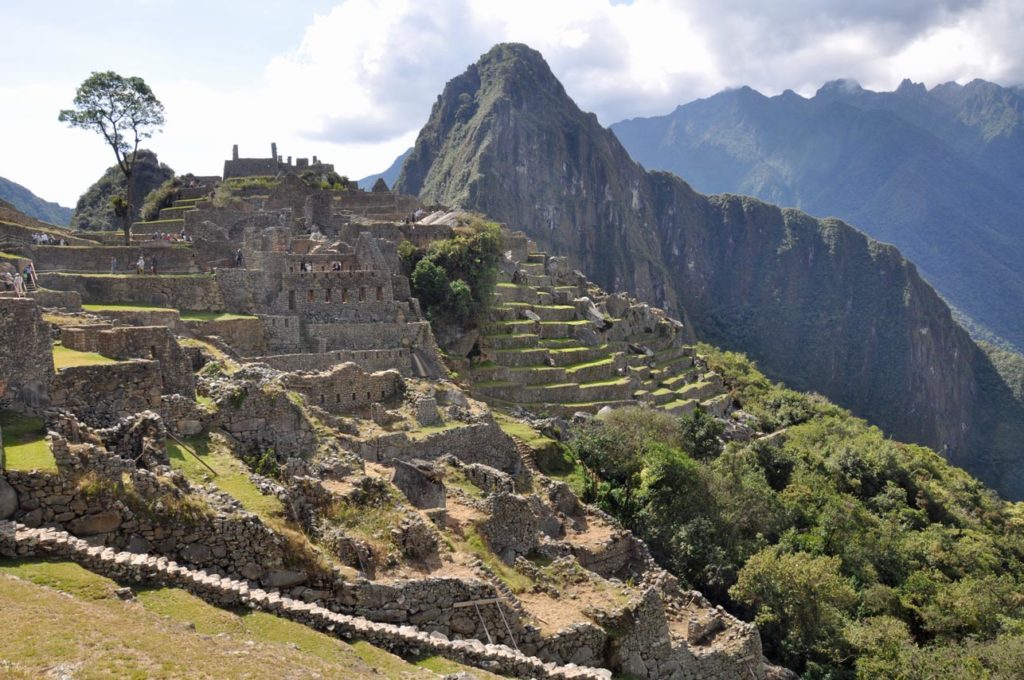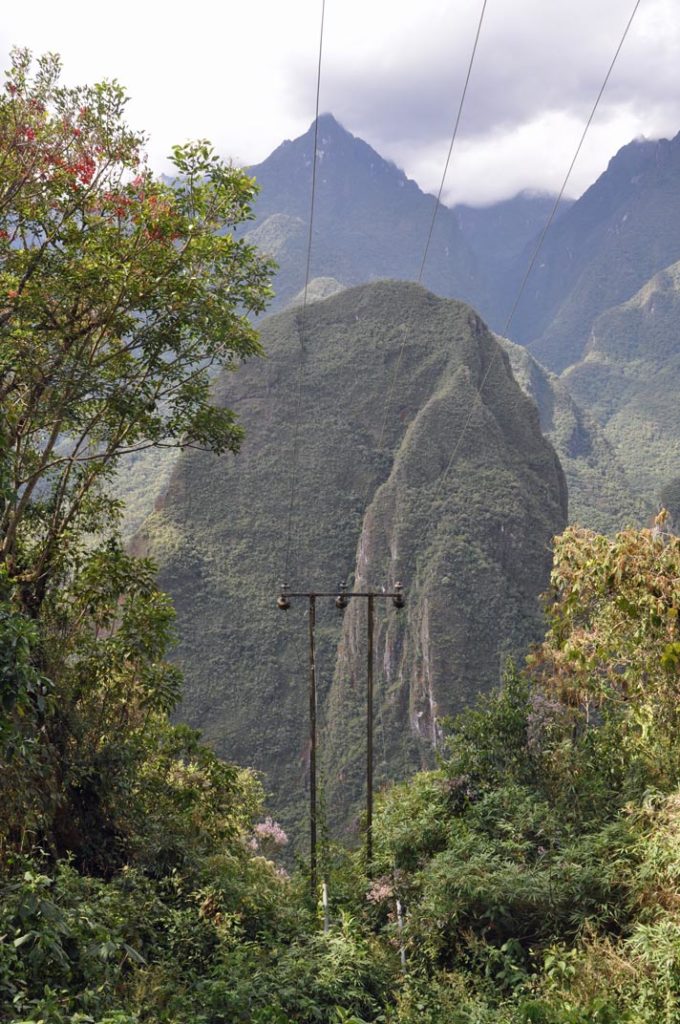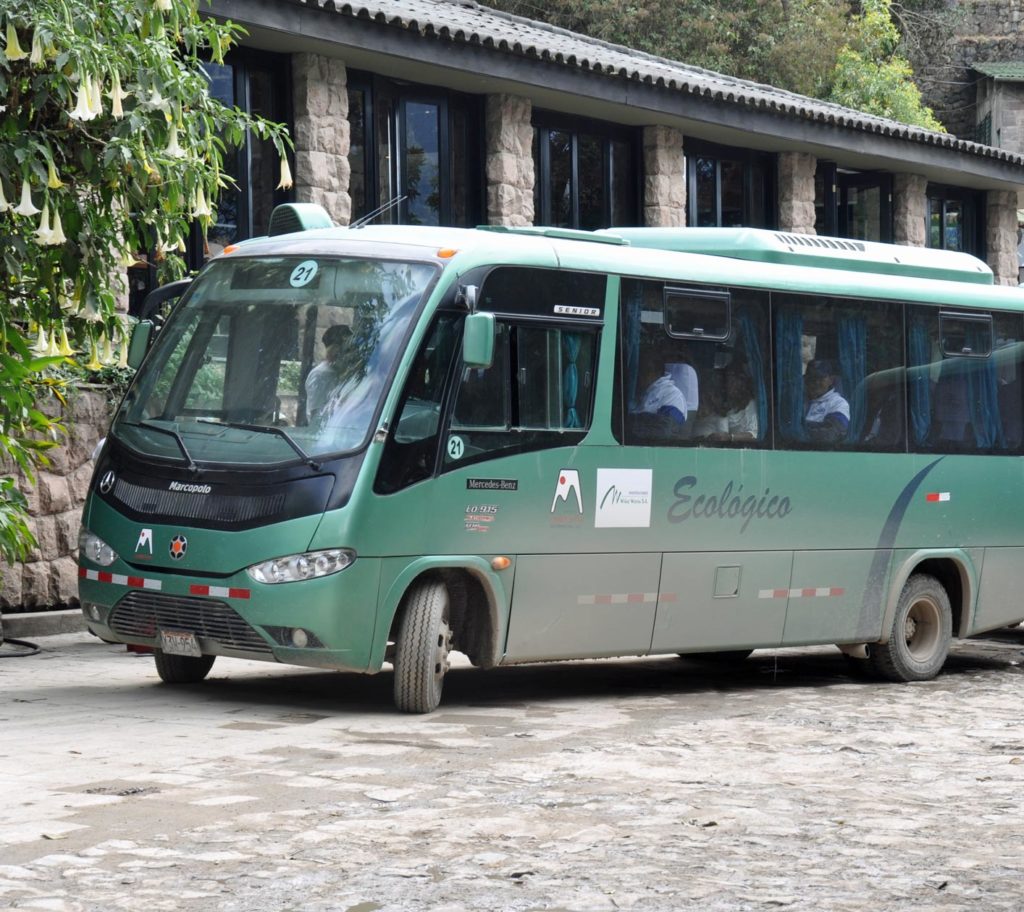Machu Picchu is an iconic site, one of those places that you have seen the pictures and yet still find yourself shocked by it’s beauty.
It also highlights the frustrations of a visit to Peru for almost every tourist since of course it’s the one site everyone wishes to see. Around 6,000 -9,000 people visit the site each and every day, shuttled up the mountains from the town of Agua Calientas for a time slot entry.
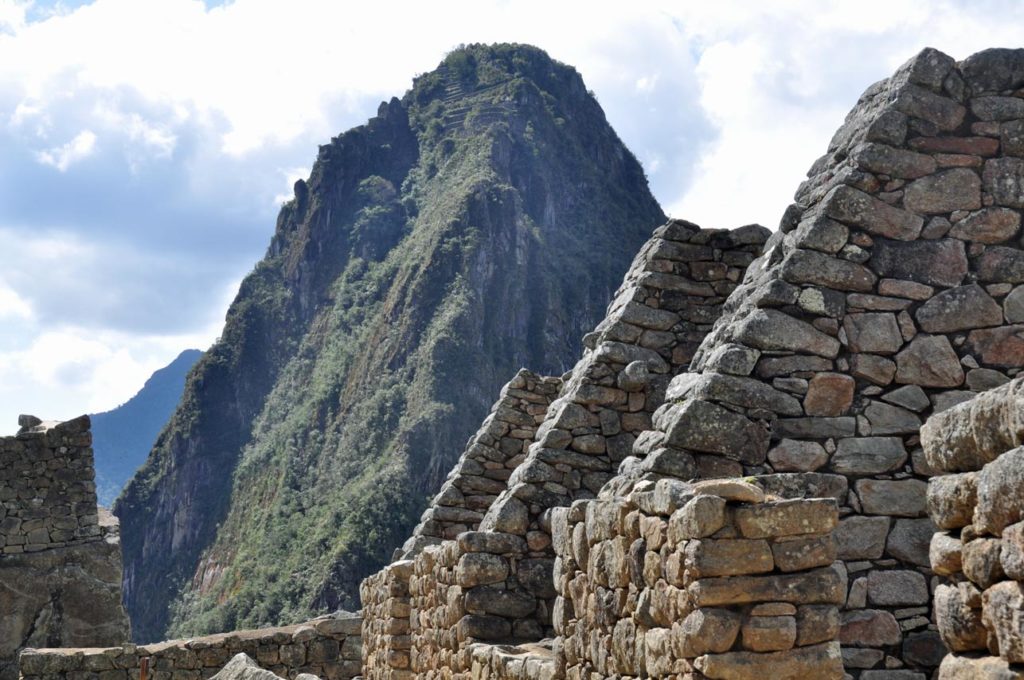
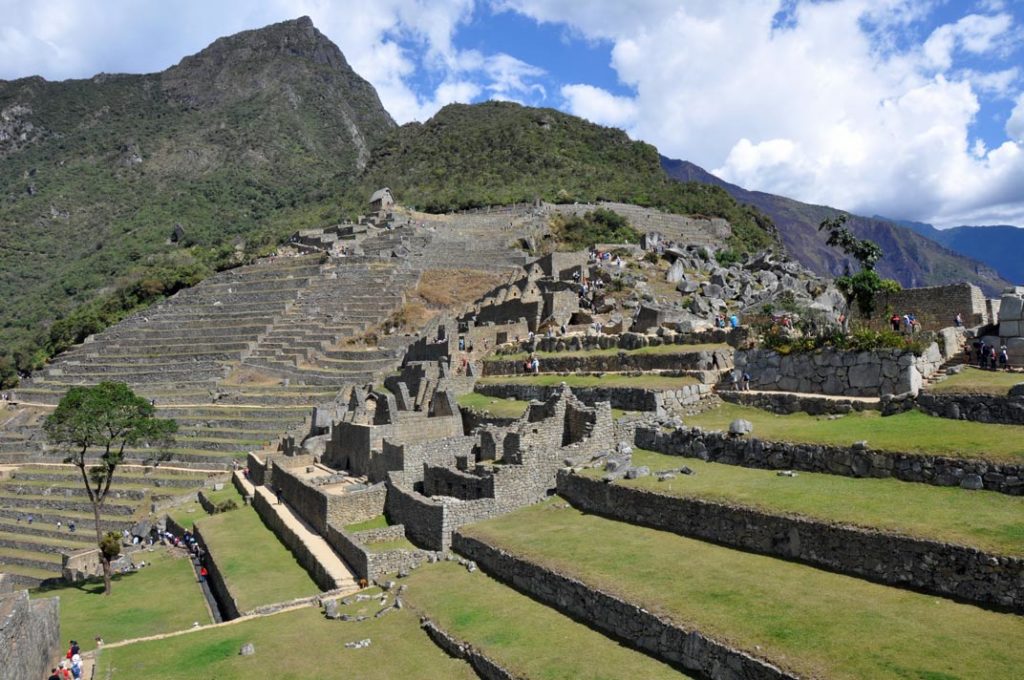
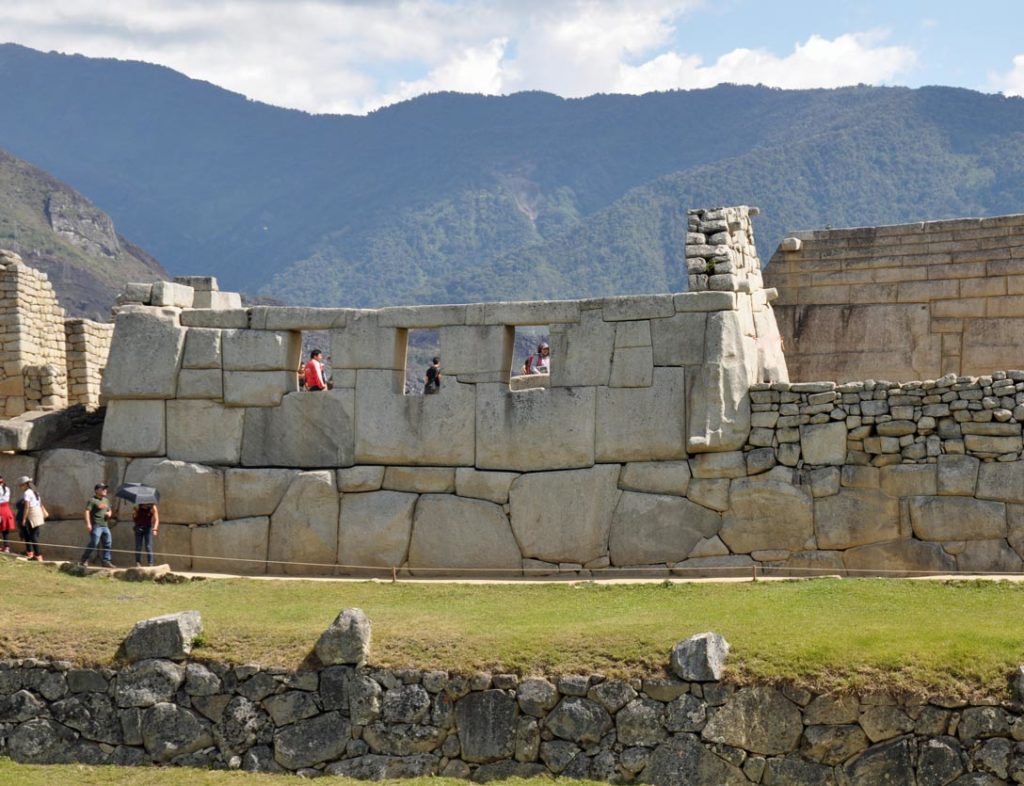
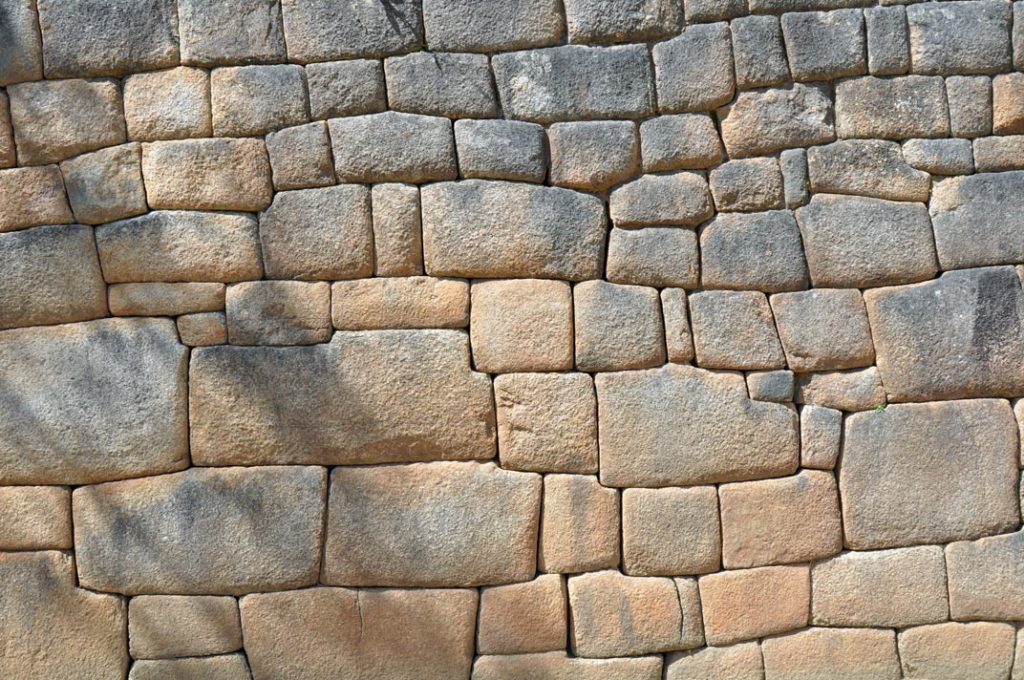 In theory numbers are limited but no one on site has seen any fall in the numbers and everyone cites corruption as the reason. Once within the walls, with a registered guide, there is a one way policy effectively clockwise around the site, though you are allowed to re-enter within a set time on that day.
In theory numbers are limited but no one on site has seen any fall in the numbers and everyone cites corruption as the reason. Once within the walls, with a registered guide, there is a one way policy effectively clockwise around the site, though you are allowed to re-enter within a set time on that day.
Yet the site is large enough of most of the people to disappear but of course the damage done is accumulative, the grinding down of the site by all of those footsteps.
So the line for the bus to head up the mountain starts early, for those people wishing to see sunrise over the mountains with waiting queues lasting almost two hours for the early morning at around 4am when the buses start.
When we arrived in town from the train the queue for the buses to the site were non-existent so we had a painless transfer from train to hotel to bus at around 11am. We were also blessed with incredibly good weather, sunshine and blue skies.
We had not booked tickets for the second morning, having decided to leave it until the weather forecast became clear. Mostly, people book two visits just in case of fog or rain but I was quite prepared to stand in the queue for a second set of tickets of that happened, and despite what you are told about restrictions on numbers, everyone who wants a ticket seems to find one to use.
Talking it over with our local guide, they also pointed out the problems with early morning visits to the site at this time of the year – fog. Mostly the mornings are grey and drizzly, with the mid-day sun burning away any grey for the afternoon. It would be a bit of a bugger to queue for two hours at some ungodly hour just to arrive to the damp grey of fog.
The site also highlights the limitations of what is known, or rather unknown about the Incas. They do not know why the site was abandoned, possibly just because of smallpox brought in to the town by evacuees escaping the Spanish. They don’t know why it was sited in such an inhospitable though beautiful spot at the very end of the valley.
So you wander around a town, built by a culture which had no money, only a barter system where every citizen owed it’s ruler 3 months of the year as work. There are no shops, just houses and fields on endless terraces, some peering down from the tallest mountain just in front of the town.
It is a mad place, madly beautiful but astonishing to believe anyone could rationally site their palace on top of a mountain so far from everywhere that it effectively just disappeared.
It is the detailing of the place that stays with me. The fact that the town is built on a geological faulting that is causing the site to slip apart ever so slowly yet the Incas managed to identify this slippage and build terraces that could cope with it.
It is the constant echo of angles, of the slope of the mountains being echoed in the slop of the roofs of the houses.
The trapezoidal doors, windows and niches in rooms built to slightly lean in on each other, to effectively increase their stability by existing in a state of constantly falling in on each other.
And everywhere around you, the constant shock of such beautiful scenery.
And llamas, always llamas.
Who is mad enough to put their terraces for growing crops at the top of a peak so high and so steep, looking down on Machu Picchu.
And in the houses, the clear stone supports for mezzanine sleeping areas that we saw still in use in a house in Ollantaytambo.
Maybe it isn’t the town ruins so much as the mountains that shock the visitor, but then maybe that’s why the town was built. Maybe it was just so damn beautiful that some local warlord had to live there.






